2016 NBA draft Big Board 3.0: Top 60 prospects

Get all of Jeremy Woo's columns as soon as they’re published. Download the new Sports Illustrated app (iOS or Android) and personalize your experience by following your favorite teams and SI writers.
The list of entries is official, the draft order is set, and we are less than one month away from the big night. So, over the past several weeks we’ve expanded the board from 30 to 60, with tons of change up and down as the pre-draft process moves forward.
Here’s another reminder that the Big Board aims to rate players in a prospect vacuum, not relative to team fit. For that, check out Andrew Sharp’s mock draft. But 28 days from now, we’ll have all our answers. Until then, here are new rankings to chew on.
• MORE NBA: Payton on son's draft prospects | Mock draft: No. 1 debate
1. Brandon ingram, dUke
PREVIOUS: 6
RECORD: LAST BIG BOARD 2
This debate has raged for months, and it’s Ingram who leapfrogs to the top of this board, his combination of high ceiling and high floor making him the best prospect in the draft. The shooting and size are going to play, possibly at either forward spot. He’s way ahead of his age curve at 18 years old and still figuring out what he’s capable of. With some physical development and a little patience, it might be a whole lot.
2. Ben simmons, lsu
PREVIOUS: 6
RECORD: LAST BIG BOARD 1
Simmons dropping to to No. 2 is less an indictment of him and more based on the development of Ingram’s case. It’s more a matter of preference for the Sixers. Simmons’s size and playmaking ability is still tantalizing, but you’re going to have to build the right roster to empower him, and that’s likely going to take significant time. He’s not a scorer at his core, but put him in a position to freelance and facilitate, and you might maximize the results. He’s so unique that he’s tricky to peg. Are you a believer? Are the Sixers?

3. DRAGAN BENDER, MACCABI TEL-AVIV
PREVIOUS: 7
RECORD: LAST BIG BOARD 3
Oversized playmakers are in demand these days, and Bender might be that. He’s wildly different from Kristaps Porzingis, for the final time. He needs seasoning against elite competition, but the passing, shooting and ability to put it on the deck at as a legit 7-footer make him a truly unique prospect, given time. On the surface, he looks like a great fit for Boston, which will inevitably need to keep some excess draft picks overseas.

4. JAMAL MURRAY, KENTUCKY
PREVIOUS: 6
RECORD: LAST BIG BOARD 4
Murray has top-five value in this class based on his college production, shooting ability and the fact he won’t turn 20 until February. The three-point stroke will be his calling card, but his craftiness and ability as a secondary playmaker should let him play a bit of both guard spots. Scouts love his confidence and maturity, and though he’s not especially explosive or quick, he’s found ways to score nonetheless. He has a great case to be the first guard picked.
5. henry ellenson, marquette
RECORD: LAST BIG BOARD 8
Ellenson measured a legit 6’11” in shoes at the combine, which was notable because it confirmed he has the size to, in theory, defend centers. The biggest questions stem from his lateral quickness defensively, and being able to stick him on a big instead of stretch forwards should help compensate. His skill set is as diverse as any in the class—he can play in transition, put it on the floor and hit an open jumper. And best case scenario, that’s more than enough to keep him out there contributing whether he cuts it defensively or not.
6. kris dunn, providence
PREVIOUS: 6
RECORD: LAST BIG BOARD 5
There’s no question among scouts that Dunn is the best point guard prospect available. He’s got great size and athletic ability, excels driving to the basket and has the tools to be a great defender. Many think he can contribute right away, and that the more spread-out NBA game will help him off the drive and as a playmaker. The consistency of his jump shot will likely determine how high his star can rise.

7. BUDDY HIELD, OKLAHOMA
PREVIOUS: 6
RECORD: LAST BIG BOARD 7
Hield’s elite shooting ability, both off the dribble and spotting up, has firmly established him in this range. He should be an immediate threat to score, but the multidimensionality of his offense is up for debate. If he can attack a closeout against NBA length and make plays off the dribble, he’s golden. Though he’s 22 already, the development he showed over four college seasons actually plays in his favor with some scouts.
8. jaylen brown, cal
PREVIOUS: 6
RECORD: LAST BIG BOARD 9
Brown’s an athletic specimen with a tantalizing ceiling, but after an at-times glaringly shaky college adjustment, he’ll face an even larger one next season. “He’s not the first freak athlete to come along,” one scout said. “If you don’t match that with understanding of how to play, you can float.” Think about how Stanley Johnson and Justise Winslow contributed as rookies: Brown won’t be able to bully-ball his way around the NBA every night. But, he’s got value in a down lottery class.
9. Jakob poeltl, utah
PREVIOUS: 7
RECORD: LAST BIG BOARD 6
Poeltl has outstanding size, and is already a strong scorer with his back to the basket. There will always be a place for those types of guys, even as the league begins to skew small. Scouts love his nimble feet and instincts around the basket, but the flipside comes defensively, where he’s not an outstanding shot blocker and will have to make up for it as part of a team concept. But if you’re looking for a true center, he’s the most polished one here by far.

10. MARQUESE CHRISS, WASHINGTON
PREVIOUS: 6
RECORD: LAST BIG BOARD 10
The ceiling appears quite high for Chriss, who looks like a legit stretch big man with bounce and upside as a shooter. He could become a pick-and-pop weapon as he extends his range, he’s working to be more comfortable on the perimeter, and he’s still just 18. There’s certain to be a learning curve, but on upside, he’s right there with the best in this class.
11. TIMOTHE LUWAWU, SERBIA
PREVIOUS: 6
RECORD: LAST BIG BOARD 11
Two-way wings are always a valuable commodity, and Luwawu’s one of the best in a thin draft. Physically his appeal is clear, with a wingspan over seven feet and solid leaping ability. He also might be more NBA-ready than you think: two scouts cited his passing and decision-making, he can stick with a few different positions on the perimeter, and he’s improved significantly this season playing against solid Adriatic League competition. One scout compared his skill profile to Jimmy Butler: “He’s not breaking you down, but he gets to his spots.”
12. deyonta davis, michigan state
PREVIOUS: 6
RECORD: LAST BIG BOARD 13
Davis’s length, quick feet and great shot-blocking instincts make him a theoretically great fit to anchor spread lineups and corral ball-handlers. You don’t have to run anything for him on offense, he works the glass and ideally allows you to try defensively looks around him. With improving scoring touch and a semblance of a jump shot, there’s reason to think he’ll come along nicely on the other end of the ball, too.
13. skal labissiere, kentucky
PREVIOUS: 6
RECORD: LAST BIG BOARD 14
Labissiere hitting unguarded jumpers in a private combine-week workout generated some buzz, but smart evaluators know better than to read too hard into that. That said, the potential as a shooter adds an interesting dimension to his shot-blocking and athleticism. He’s playing developmental catch-up, but could be a worthwhile gamble for teams with the time and resources to develop him. But, as one scout put it: “It’s really hard to play in the NBA not knowing how to play basketball.”
14. domantas sabonis, gonzaga
PREVIOUS: 6
RECORD: LAST BIG BOARD 17
Sabonis starred in March as the focal point of Gonzaga’s team and has established pretty solid mid-first round stock. He’s a fairly safe pick with the way he rebounds and finishes around the rim, and he’s mobile and plays hard enough to make up for what he lacks in length and explosion. Obviously, there’s the NBA pedigree too.

15. DENZEL VALENTINE, MICHIGAN STATE
PREVIOUS: 6
RECORD: LAST BIG BOARD 15
Valentine’s production (19.2 points, 7.5 rebounds, 7.8 assists) was outstanding last season, and his feel and playmaking help balance the lack of eye-popping athletic measurables. Michigan State products with his type of resume tend to get full credit. He won’t play the same ball-dominant role as a pro, but you‘re buying him as a secondary ball-handler who can space the floor, then hoping he catches up defensively.

16. FURKAN KORKMAZ, ANADOLU EDES
PREVIOUS: 6
RECORD: LAST BIG BOARD 16
The combination of athleticism, shooting and youth make Korkmaz a very interesting stash candidate. He’s starred for Turkey at youth levels and shown flashes playing with Efes’s senior team, but it’s worth noting how relatively small his sample size is against elite competition. He’s a long-term investment, not an immediate-impact selection.
17. DEMETRIUS JACKSON, NOTRE DAME
PREVIOUS: 6
RECORD: LAST BIG BOARD 19
Jackson tested well athletically at the combine, which didn’t hurt him after a good showing in the NCAA tournament. He’s got a very good chance to be the second point guard drafted and could sneak into the back of the lottery. He’s a starting-caliber athlete, but the production has to catch up for him to be more than a role player. “My problem is, he’s not great at controlling and running a team, and he’s not great at taking control and doing it himself, either,” one NBA scout told me prior to the tournament. “But he has all the tools to do it.”
18. TAUREAN PRINCE, BAYLOR
PREVIOUS: 6
RECORD: LAST BIG BOARD 25
Prince did a little bit of everything for Baylor, with a game one scout described as “unconventional.” He’s long and strong and should be able to cut it athletically, and while he struggled some as a senior when tasked with making plays on the ball, odds are he won’t be asked to do as much of that the NBA. Although he lacks an elite skill to hang his hat on, he should be able to step into a rotation pretty quickly.
19. TYLER ULIS, KENTUCKY
PREVIOUS: 5
RECORD: LAST BIG BOARD 18
Ulis has solidified himself as a mid-late first rounder, and he’s probably the most instinctive passer among available guards. He won’t make many mistakes, and he’ll make everyone around him better. There are far worse investments in this range. “Three inches taller,” one scout says, “and he would be the best point guard in this draft.”
20. WADE BALDWIN, VANDERBILT
PREVIOUS: 6
RECORD: LAST BIG BOARD 21
Baldwin’s combine measurements—6’4” with a 6’11” wingspan—certainly validated his case as a defensive stopper with a chance to be more. His offense hasn’t sold some scouts, and he’s not a natural point guard in the purest sense, but he can hit a shot and could perhaps better suited for a lower-usage role. Multiple scouts have cited his tendency to overthink the game and get in his own way. Still, his defensive potential gives him a relatively high floor.
21. DEJOUNTE MURRAY, WASHINGTON
PREVIOUS: 6
RECORD: LAST BIG BOARD 23
One optimistic scout calls Murray, simply, “a baller.” “He does some things you can’t teach,” says another. He’s got a ways to go to actually play point guard in the NBA, but Murray’s gifts bring a ton of intrigue, with a host of dribble moves and a nice in-between game at a very early stage of development. He was mistake-prone at Washington, but oftentimes they were of the aggressive sort. He could be the latest in a long line of entertaining, productive Seattle guards, but it also may take a few years.

22. ANTE Zizic, cibona zagreb
PREVIOUS: 6
RECORD: LAST BIG BOARD N/A
He’s a garbage man who knows his role, works hard on the glass and is mature enough physically for the NBA right now. Impressive production as a teenager in the Adriatic League (13 points, eight rebounds per game) definitely stands out. Zizic’s skills have a ways to go, but it’s easy to see him as a complimentary player on the interior.
23. cheick diallo, kansas
PREVIOUS: 6
RECORD: LAST BIG BOARD 27
Diallo decided to play at the combine and took advantage of that opportunity: no player shone more from a physical standpoint. He’s bouncy, aggressive and has a reputation for playing hard, making him a no-brainer energy big with added seasoning. Diallo’s length makes up for his lack of height. He was buried in the Kansas rotation, but will get a better chance to develop from here, whether it’s on an NBA bench or logging some more minutes in the D-League. Once a touted high school prospect, Diallo has rejuvenated his stock somewhat.
24. diamand stone, maryland
PREVIOUS: 6
RECORD: LAST BIG BOARD 20
Every traditional big man faces the “can he play uptempo” stigma these days, and Stone’s no exception. He’s certainly talented, with great size and touch, quality post moves and a developing mid-range shot. Stone was inconsistent all season, particularly on the glass, and might face a steeper learning curve as his frame matures and he faces elite length every night. Scouts are less worried about his body and defense than they are about his adjustment to the rigors of NBA regimen.
25. Thon maker, ORangeville prep
PREVIOUS: 7
RECORD: LAST BIG BOARD N/A
Opinions remain mixed on Maker, but it seems scouts are beginning to come around a bit. He’s a legit 7-feet, long and mobile, but, of course, rail-thin. People like his intangibles, yet there are still a ton of ifs when figuring out which of his strengths actually translate to the league. He might be an athletic energy big who can step out and make a shot, he also may never be able to bang inside. Maker’s been working out against Brandon Ingram all month and apparently holding his own. Someone will draft him, but there’s a wide range of outcomes here.

26. deandre bembry, st.Joseph
PREVIOUS: 6
RECORD: LAST BIG BOARD N/A
Think of Bembry sort of like Denzel Valentine: his greatest strength is his perception of the game, elite statistical production and well-rounded skill set. He’s low-risk in that you can see him meshing into any offense with his playmaking and versatility, the only major question being his three-point shot. He could make an impact early on and makes particular sense for a playoff-bound team in the 20–30 range.

27. JUAN
PREVIOUS: 6
RECORD: LAST BIG BOARD 29
Hernangomez enjoyed a strong season in Spain and won’t turn 21 until September. A skilled stretch-four who could eventually play some three, he’s comfortable getting his offense both spotting up and finishing inside. One scout who’s seen him firsthand cited Hernangomez’s high energy level and deceptive leaping ability (“he might dunk you, if you give him a step.”) It helps he’s already playing legit minutes and producing in a very tough league.
28. a.j. hammons, purduE
PREVIOUS: 7
RECORD: LAST BIG BOARD 30
There’s no reason Hammons shouldn’t be a useful rim protector from day one. He’ll turn 24 soon, which will keep him out of the upper reaches of the draft, but he’s a definite NBA talent with an improving offensive skill level and pro-ready body. The question with him has always been his motor, and teams are fully aware of some off-court discipline issues at Purdue. If he puts everything together, Hammons could be a definite asset.

29. ivica zubac, SPAIN
PREVIOUS: 6
RECORD: LAST BIG BOARD N/A
Zubac turned heads with insane production at the 2015 FIBA U19 Worlds (33.7 PER, 17.6 points, 7.9 rebounds). He’s a little rough around the edges fundamentally, but a strong finisher with a great frame and nice post-up game. Zubac has potential to cut it defensively and as a screen-setter and rim-runner should be a fit at the next level. He’s expected to be an easy guy to stash and bring over and makes a lot of sense for teams with multiple picks.
30. stephen zimmerman,
PREVIOUS: 7
RECORD: LAST BIG BOARD N/A
Zimmerman has late first-round value, with great size and mobility and a pretty nice shooting touch. He’s not a guy who really loves to bang inside, but you can see him as a useful pick-and-pop player at minimum. He’ll need to bulk up to play center and his defense leaves something to be desired right now, but the potential tied up in his strengths is substantial.
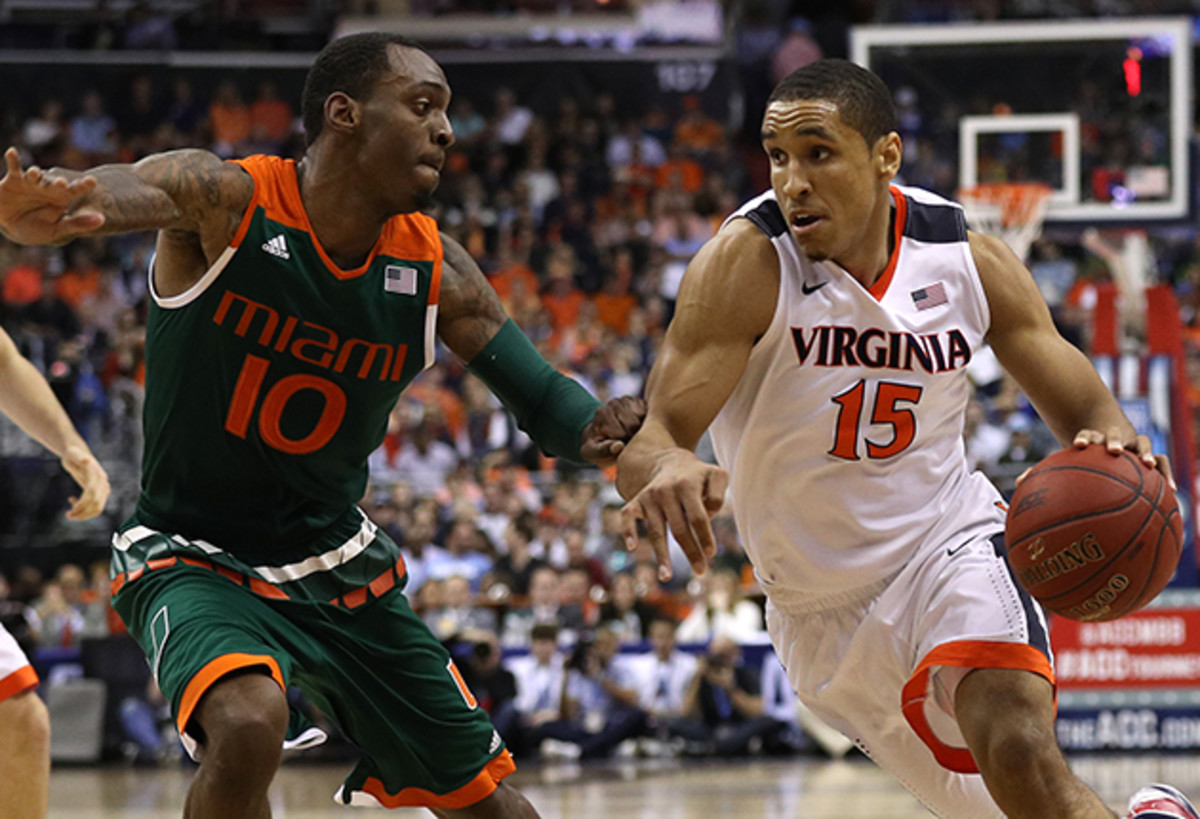
• MORE NBA: Book that shaped Kerr, Carroll | NBA playoff hub
31. Pat McCaw | UNLV | SG | 6’7”, 181 | So.
As three-and-D types go in this draft, McCaw checks out well: his shooting stroke and defensive length (6’10” wingspan) are tangible strengths, and he’s developing as a playmaker. He could provide first-round type value.
32. Caris LeVert | Michigan | G | 6’7”, 191 | Sr.
LeVert’s long injury history clouds his stock, but in a talent vacuum, he checks out in the first round. He’s on track to return to the court for workouts in June, and presents a definite risk-reward opportunity.
33. Damian Jones | Vanderbilt | C | 7’0”, 244 | Jr.
People are somewhat split on Jones, whose physical tools and defensive ability profile well, but never quite put everything together at Vandy. In a simplified NBA role, he could thrive. “That guy can get up and down the floor like very few bigs can,” one scout says.
34. Malcolm Brogdon | Virginia | G | 6’6”, 223 | Sr.
Given that he’s one of the most experienced players in the draft, it’s easy to see Brogdon sneaking into a rotation right away, a la Norman Powell or Josh Richardson. He’s not a crazy upside play, but a diversified two-way skill set certainly holds appeal.
35. Malik Beasley | Florida State | SG | 6’5”, 190 | Fr.
An athletic slasher with a nose for the basket, Beasley demonstrated the ability to score at all three levels in his one season at FSU, and improved as the year went on. He’s raw, but he’s a definite prospect.
36. Ben Bentil | Providence | PF | 6’8” 229 | So.
Bentil profiles as a quality rebounder with good touch who can also hit an outside shot, and has long enough arms to compensate for his relative lack of height. He needs seasoning, but the tools are intriguing.
37. Joel Bolomboy | Weber State | PF | 6’9”, 224 | Sr.
Freakishly athletic with strong mid-major production on his resumé, Bolomboy’s hallmark ability is rebounding, with a dash of everything else sprinkled in. He’s got a somewhat unorthodox game and will need to be molded, but could be quite the dice roll.
38. Brice Johnson | North Carolina | PF | 6’10”, 209 | Sr.
Johnson’s outstanding senior season for the Tar Heels didn’t wipe away three years of inconsistency. His lack of bulk could make his NBA transition tougher, even as a college senior. Still, he’s quite the athlete and could become a viable energy big.
39. Petr Cornelie | Le Mans (France) | PF | 6’11”, 220 | 20
He's a stretchy, fluid French big man with legit size who runs the floor, all great things in theory. Stash-worthy at minimum.
40. Zhou Qi | Xinjiang (China) | C | 7’2”, 218 | 20
He’s enormous, mobile, blocks shots and can shoot jumpers, he also weighs next to nothing and has yet to be tested by elite competition. Could make for a very unique piece ... could also be out of the league very quickly.
41. Malachi Richardson | Syracuse | SG | 6’6”, 200 | Fr.
Richardson played well in the NCAA tournament and has been sneaking onto radars given his frame and scoring ability on the wing. He’s a bit one-dimensional at this stage, looking mostly for his own offense, but the upside is there. Some see him as a first-rounder based on scoring potential.
42. Gary Payton II | Oregon State | PG | 6’3”, 184 | Sr.
Of course, the bloodlines are working for Payton, who’s a tremendous athlete and solid defender. His game is well-rounded, but the questions lie with his jump shot, which will likely keep him out of the first round.
43. Chinanu Onuaku | Louisville | C | 6’10”, 245 | So.
He brings a legitimate defensive presence inside and showed well at the combine. He’s got good size inside, but not much of an offensive skill set yet. Still just 19, Onuaku has a chance as a rotational big down the line.
44. Michael Gbinije | Syracuse | G/F | 6’7”, 205 | Sr.
The more polished of the two Syracuse guards,Gbinije was a bit of a forgotten man in college after getting buried at Duke, but bloomed late, showed well at the combine, and has already played internationally for Nigeria. He’s about to turn 24, but his size, playmaking and shooting (though streaky) have appeal.
2016 NBA Mock Draft
1. Philadelphia 76ers: Ben Simmons, F, LSU (6'10", 240)
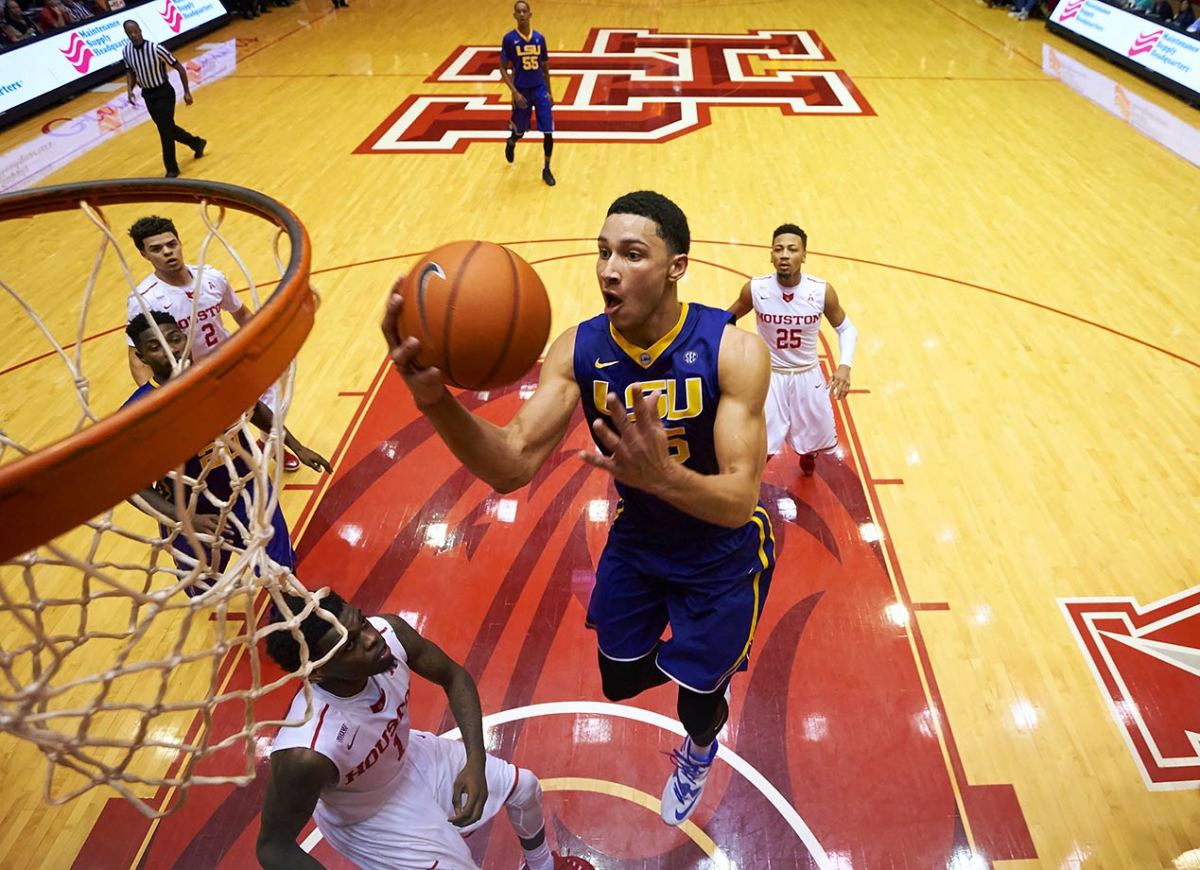
Number one could've been a much closer debate this year, but Simmons has had the clear edge ever since the Sixers won the lottery. Brett Brown knows his family from his days in Australia, Simmons trusts The Process, and this is already done. There are real questions about his work ethic at LSU and how he'll fit in the NBA, but he's got the highest upside on the board. He's 6'10 with point guard skills, and if he can develop a dependable jumpshot and improve on defense, he could be somewhere between LeBron James and Draymond Green—the two best players on the floor of an NBA Finals Game 7 a few days ago. For the Sixers, that kind of upside is worth the risk.
2. Los Angeles Lakers: Brandon Ingram, F, Duke (6'9", 195)
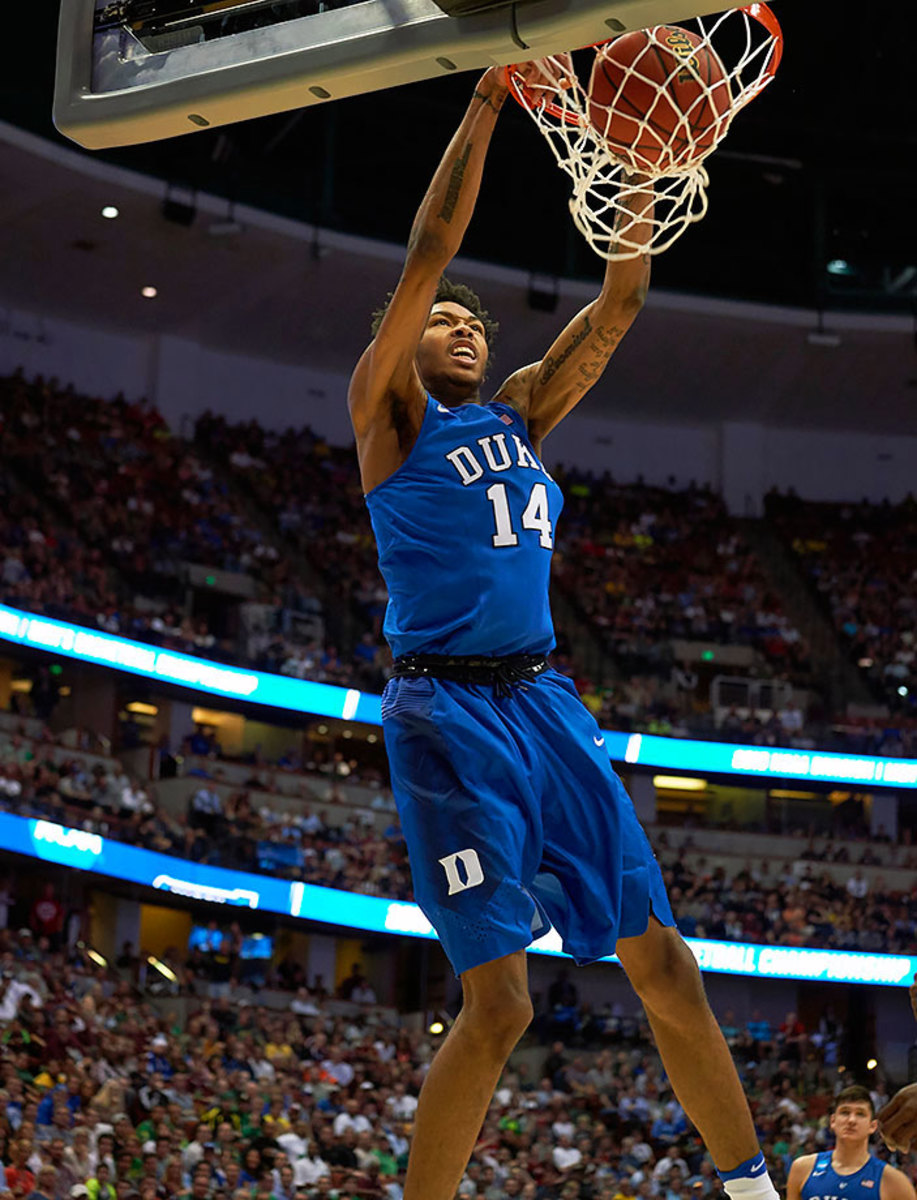
Ingram's my favorite player in the draft. He looks like he weighs 150 pounds, but he plays bigger, and he was fearless for Duke last year. All the typical draft buzzwords apply to his place in the top two—he's got a freakish wingspan (7'3), three-point range, the ability to play multiple positions and tons of upside—but I like Ingram for his intangibles as much as anything. He played his tail off against bigger players all year long, he got better as the season unfolded, and by the end he was clearly the best player on Duke's team at 18 years old. The Lakers are apparently settled on Ingram, and L.A. fans should be thrilled.
3. Boston Celtics: Jaylen Brown, G/F, Cal (6'7", 225)

The hype comes full circle! After half the NBA decided Brown was overrated over the past few months, he's now right back in the mix near the top of this draft, and he could surprise everyone Thursday. Boston has liked Brown since the regular season, and if the Celtics keep this pick, here's to betting that Ainge goes for upside on the wing. This is the same GM who was ready to trade four first–round picks for Justise Winslow last year, and Brown does a lot of the same things. With a reliable jumper, he could turn into a terror on both ends of the floor. Or, to think of this a different way: If the Celtics can't trade for Jimmy Butler, maybe they can draft him.
4. Phoenix Suns: Marquese Chriss, F, Washington (6'9", 225)
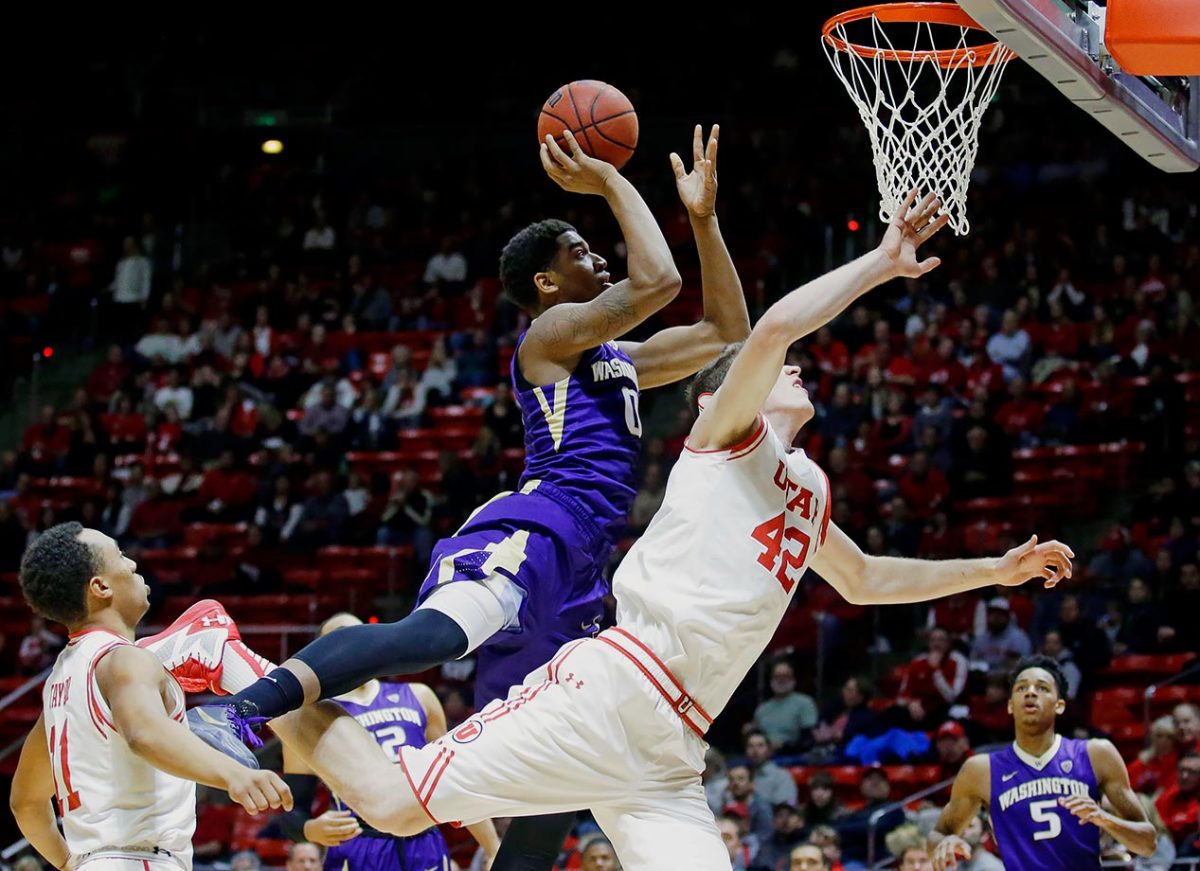
Speaking of hype... Chriss came out of nowhere—he's only played basketball for five years, he wasn't ranked in the top 50 out of high school and he only played about 25 minutes per game for Washington (thanks in large part to foul trouble)—but over the past month he's exploded up draft boards. He's got the highest ceiling of anyone beyond the top two. That's partly an indictment of his lottery peers, yes, and he's also got a much lower floor than someone like Jaylen Brown, sure. But all of that is what makes this fun. Will Marquese Chriss turn into a full-on pick-and-roll nightmare next to Devin Booker, or will he be 2016's Tyrus Thomas? Let's find out!
5. Minnesota Timberwolves: Kris Dunn, G, Providence (6'4", 220)
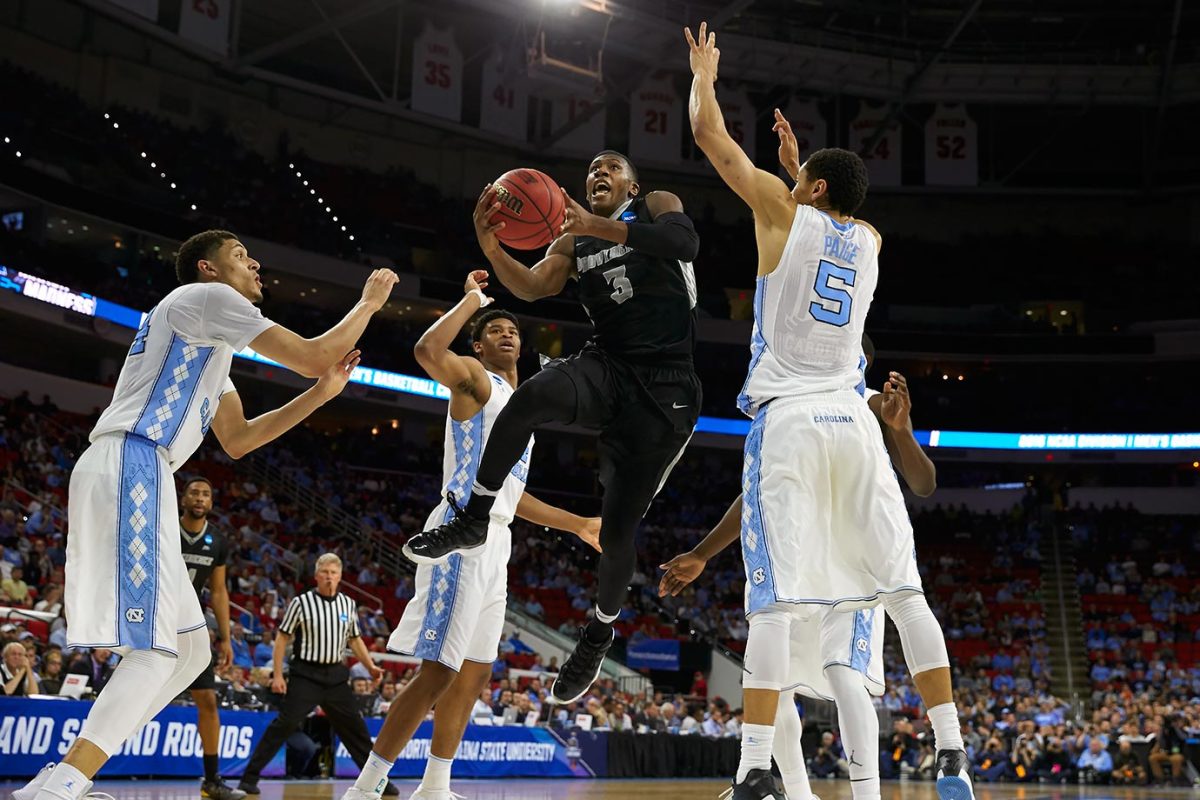
Minnesota could really use Dragan Bender in this spot, and a future built around him and Karl–Anthony Towns would be terrifying. On the other hand, Kris Dunn may be the safest bet in the draft outside of Brandon Ingram, and between injuries and Ricky Rubio rumors, the Wolves point guard situation isn't quite as solid as you might think. Dunn was one of the most productive players in the country at Providence, and he's the closest of any lottery pick to helping a team from Day One next year. He's built like a tank and plays like it—there's no way Thibs will be able pass on that, right?
6. New Orleans Pelicans: Jamal Murray, G, Kentucky (6'4", 205)
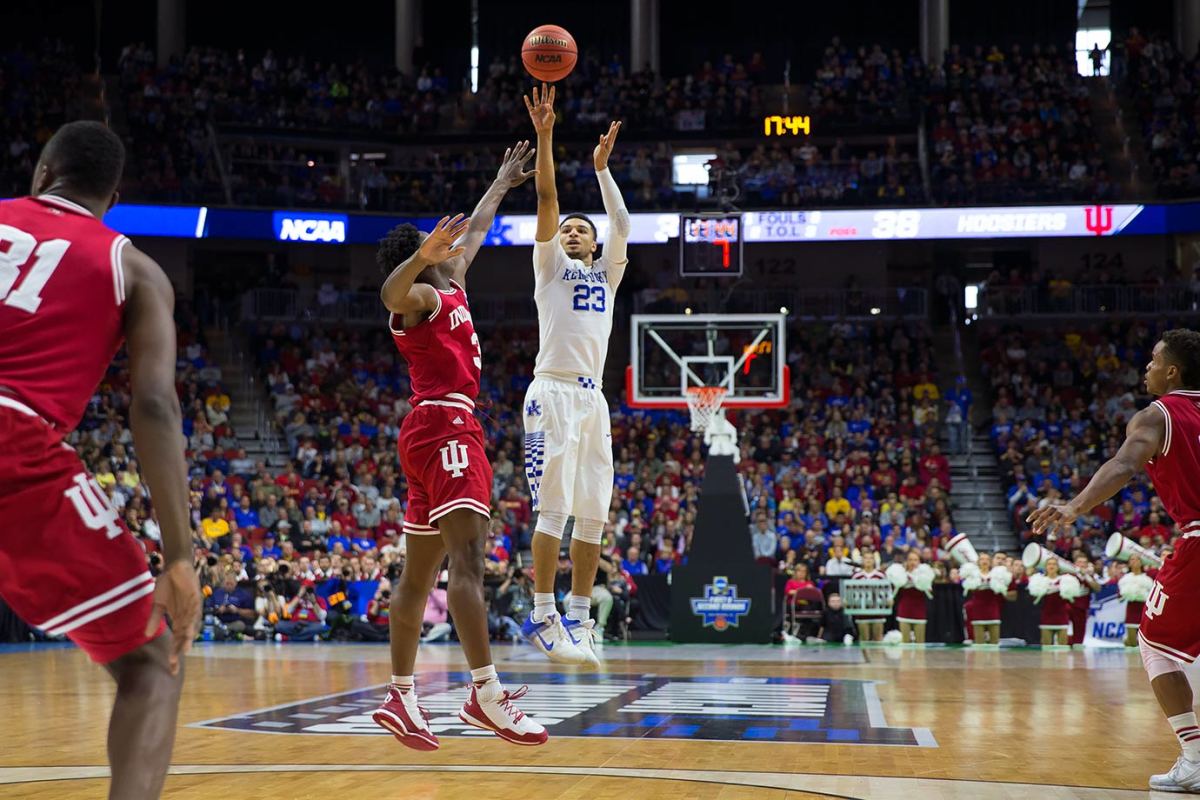
Anyone who watched him in the NCAA tournament against Indiana saw him struggle against NBA length and quickness, and his lack of athleticism will make playing defense a struggle. But look at some of the best combo-guards in the NBA—Curry, Harden, McCollum, even Devin Booker and D'Angelo Russell last year—and there are plenty of examples of talented guards who faced a lot of the same skepticism at draft time. The Pelicans should grab him hoping that he can get to that C.J. McCollum level next in a few years, and knowing that his three-point shooting could help them regardless next season.
7. Denver Nuggets: Dragan Bender, F, Croatia (7'0", 220)
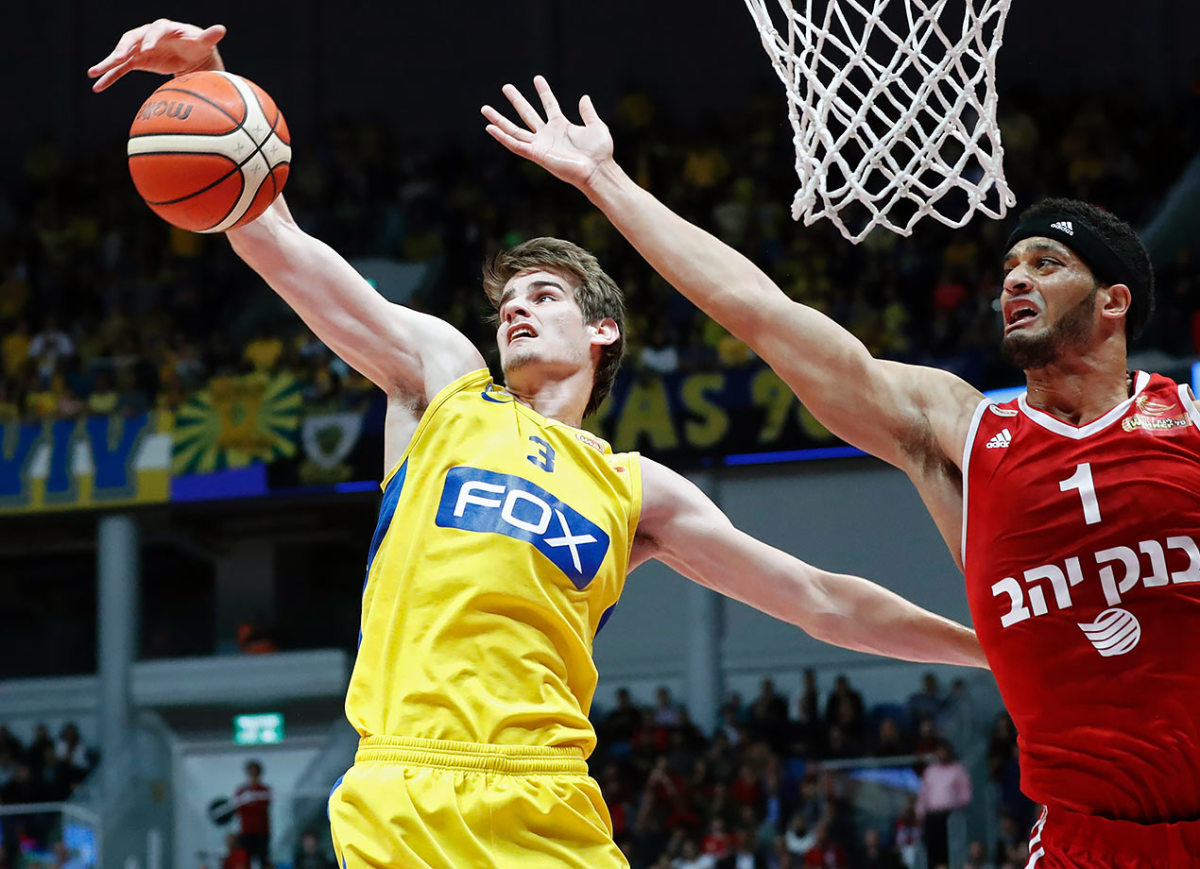
Bender's size and ability to space the floor will make him valuable wherever he lands, but as the youngest player in the draft, it'll take him a few years before he's ready to contribute. Even then, he may not score enough to be a true superstar. All of this is why he could slide tonight. But he could also turn into a skilled glue guy who can pass, shoot, and guard multiple positions on defense. For a Nuggets team that already has Nikola Jokic and Jusuf Nurkic at the five, adding Bender as a stretch–four would be a major win for the long-term blueprint.
8. Sacramento Kings: Buddy Hield, G, Oklahoma (6'4", 215)
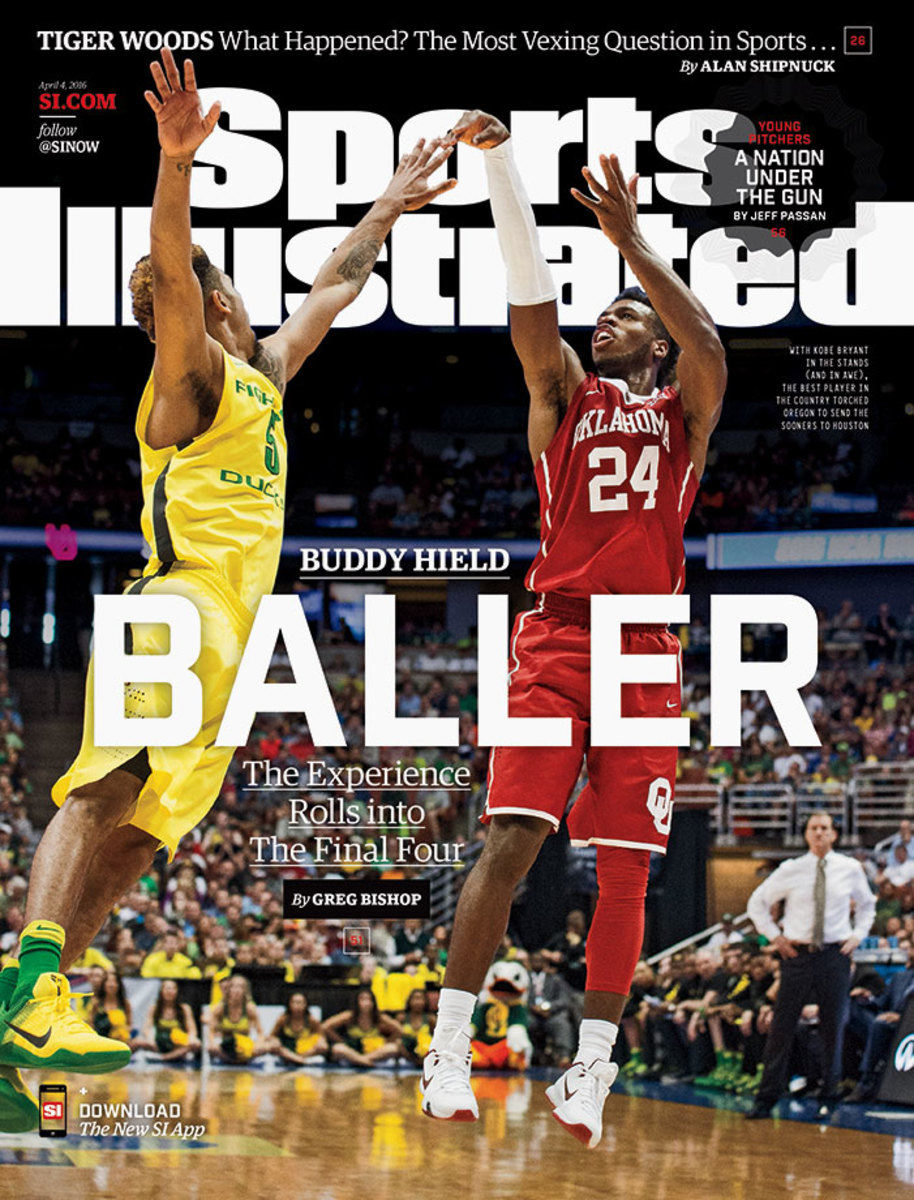
According to ESPN's Chad Ford, the Kings have been shunned by almost every prospect in the first round. Players have refused to work out, and many have refused to even provide medical records. Apparently nobody wants to be the next Nik Stauskas? In any case, Sacramento is opening a new arena this season, Boogie is in the final two years of his contract and still hasn't made the playoffs, and the Ben McLemore Experiment has been on life support for a good 24 months now. Hield's best case scenario is the Bahamian J.J. Redick, which would be great in this draft. Even in the worst–case scenario—Jodie Meeks?—his shooting should help off the bench.
9. Toronto Raptors: Jakob Poeltl, C, Utah (7'1", 240)
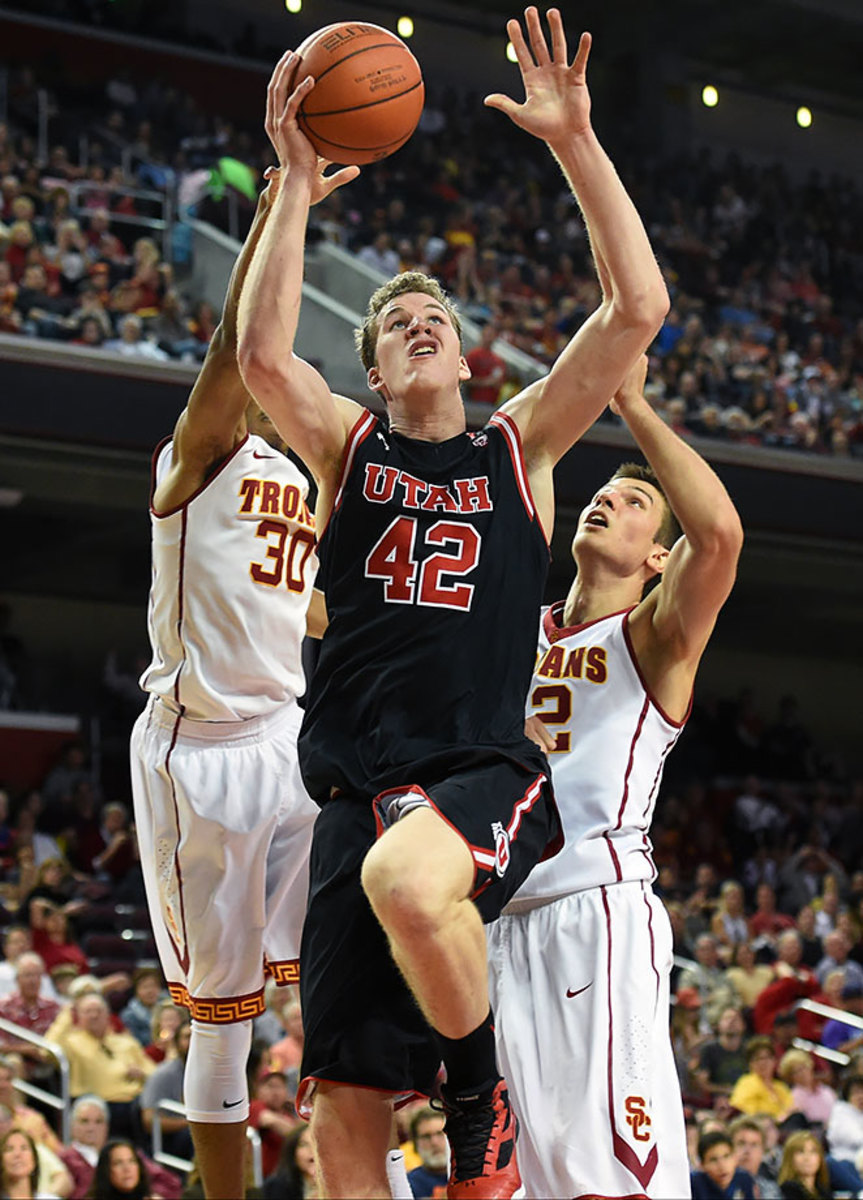
Poeltl has been a favorite of mine for a while—possibly because it's so much fun to pronounce his first name (YA-KUB). After two years in the draft the spotlight has hurt some his of buzz, but he should be a pleasant surprise for whichever team lands him. His size alone will make him a factor against most modern big men, and he's skilled around the rim. He's smart and he's mobile, and if his shot blocking isn't elite, his team defense should be excellent. If the Raptors think they'll lose Bismack Biyombo, Poeltl's a good replacement, and probably the best player available here.
10. Milwaukee Bucks: Deyonta Davis, F/C, Michigan State (6'10", 240)
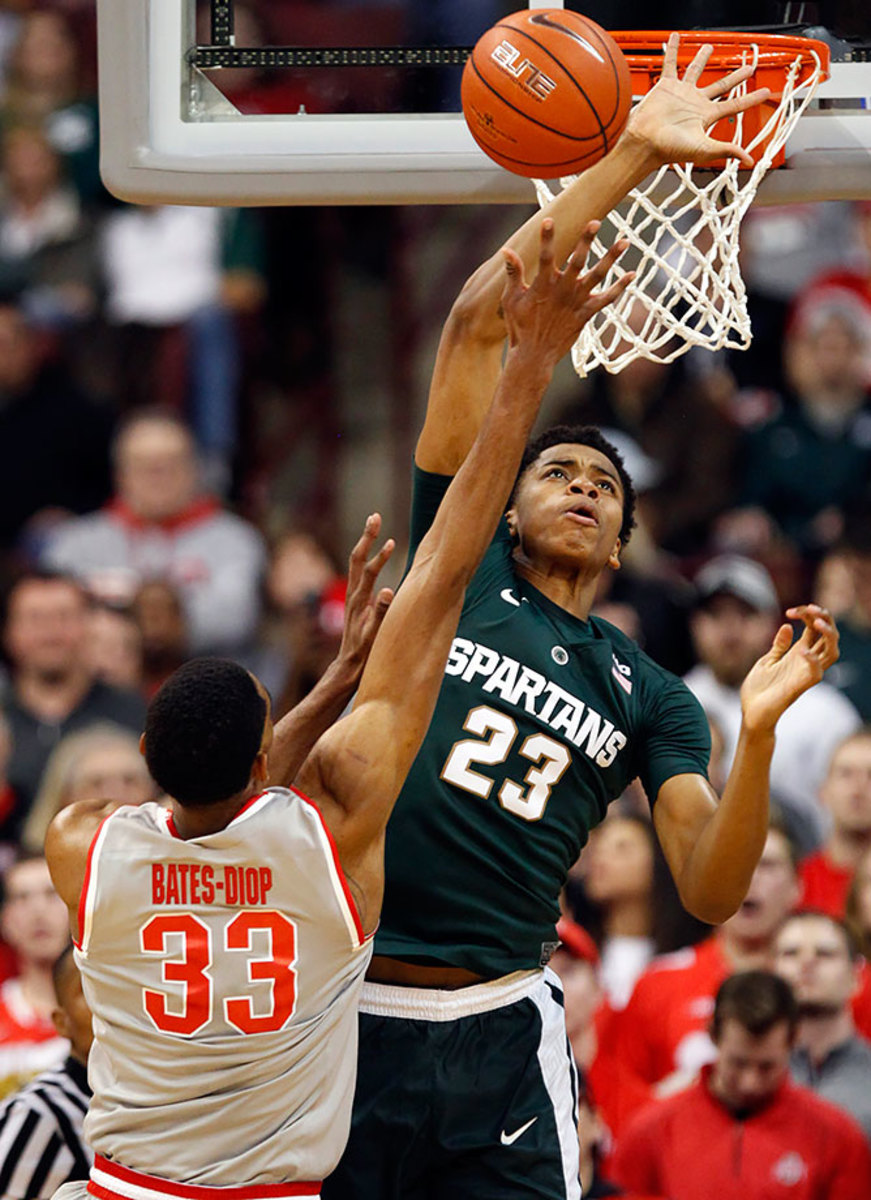
The Bucks could go in a couple different directions—Wade Baldwin, Timothe Luwawu, and Henry Ellenson are all options—but after talking it through on this Bucks podcast with friends at Brew Hoop, I'm pretty sure drafting Davis is the best option. He's raw and probably a few years away from helping as a starter, but this would be a smart long-term play. He can protect the rim, rebound, and best–case scenario, he can knock down jumpers and spread the floor. Davis can definitely do the first two, and maybe even the third. Do it, Bucks Mafia.
11. Orlando Magic: Skal Labissiere, F/C, Kentucky (6'11", 220)
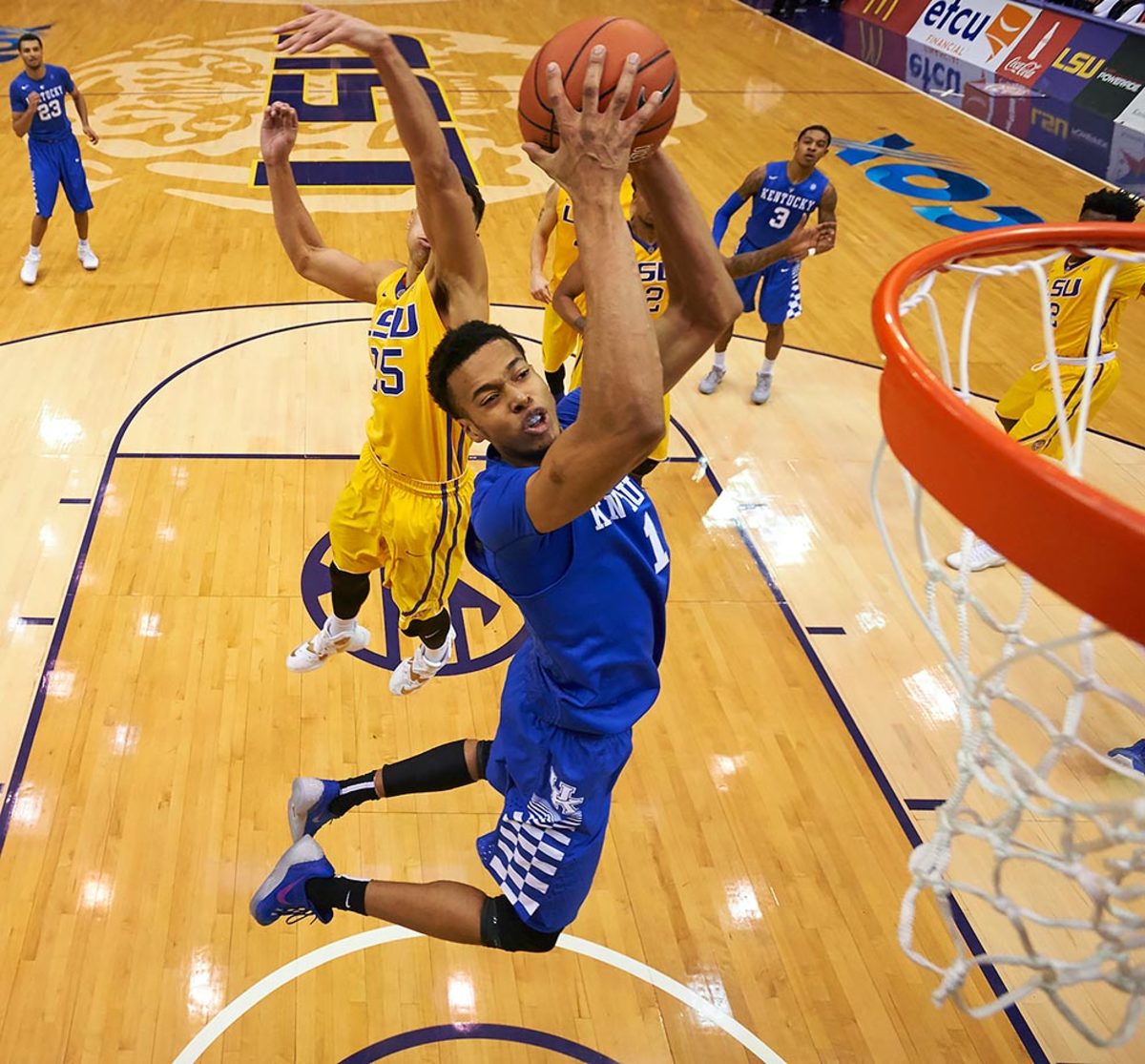
General question: Does anyone know what the Magic are doing? The pieces in Orlando don't necessarily fit, but they've got so many young players from the past few years that there aren't any obvious holes to fill, either. For now, let's assume they go for upside here. Skal is a few years and a few thousand Chipotle burritos away from banging with NBA big men, but if he can put on enough weight to hold his own, he's got all the tools to be an excellent rim-protecting stretch five (think Channing Frye).
12. Atlanta Hawks: Domantas Sabonis, F, Gonzaga (6'10", 240)
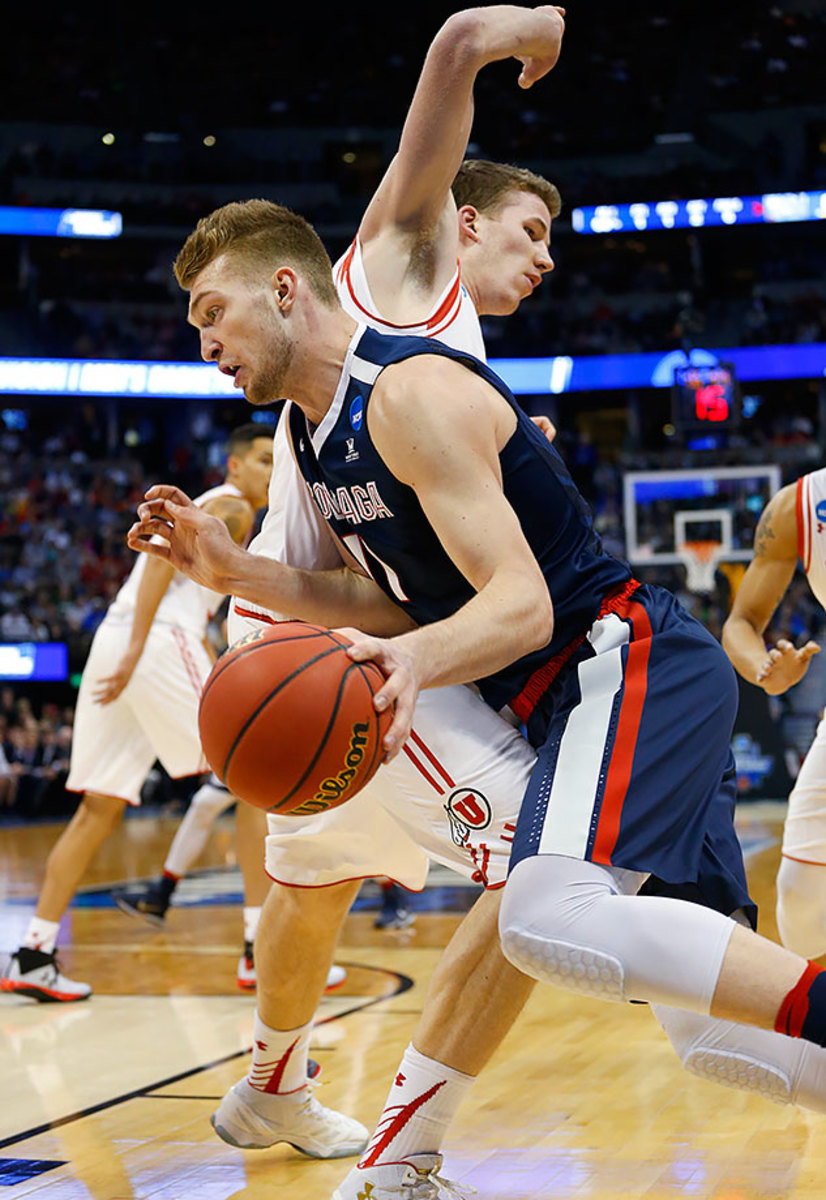
Let's see... Undersized, underrated, high motor, high IQ, star of everyone's favorite Cinderella team... He's basically already a Hawk, right? And this is definitely the best–case scenario for Domantas Sabonis. He's good and productive now, but if the Hawks can help him add a perimeter jumper, he could be excellent for the next 10 years.
13. Phoenix Suns: Timothe Luwawu, G/F, France (6'7", 205)
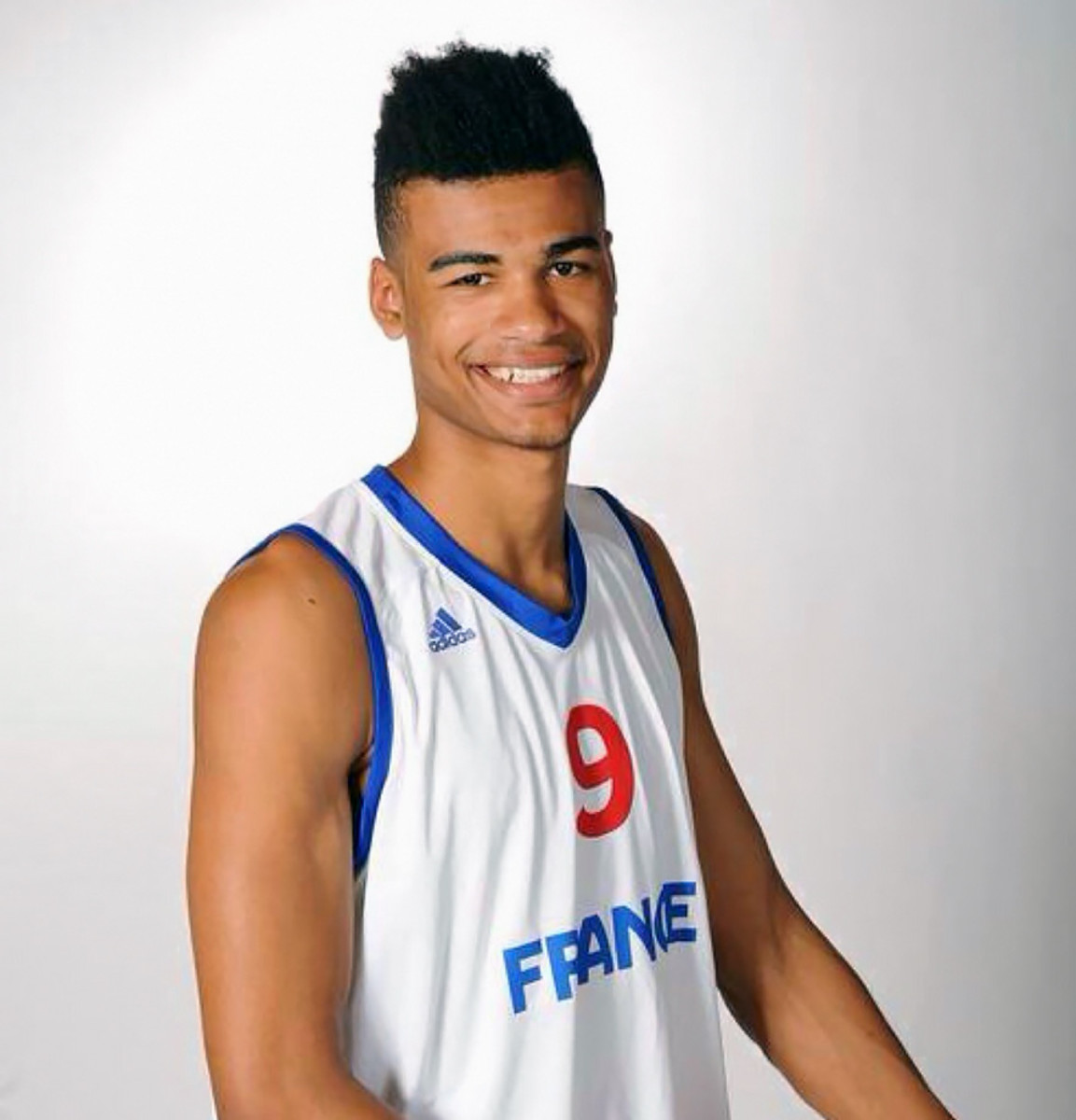
Luwawu's highlights a) lead this draft class in dunks-per-minute and b) make me want a Mega Leks jersey. At worst, he can be a helpful energy role player off the bench. At best, he can hone his three-point shooting and grow into a long (6'11 wingspan), athletic monster on the wing playing next to Devin Booker in Phoenix. The Suns could also take Henry Ellenson here, but I hope they roll the dice on Luwawu.
14. Chicago Bulls: Wade Baldwin IV, G, Vanderbilt (6'3", 195)
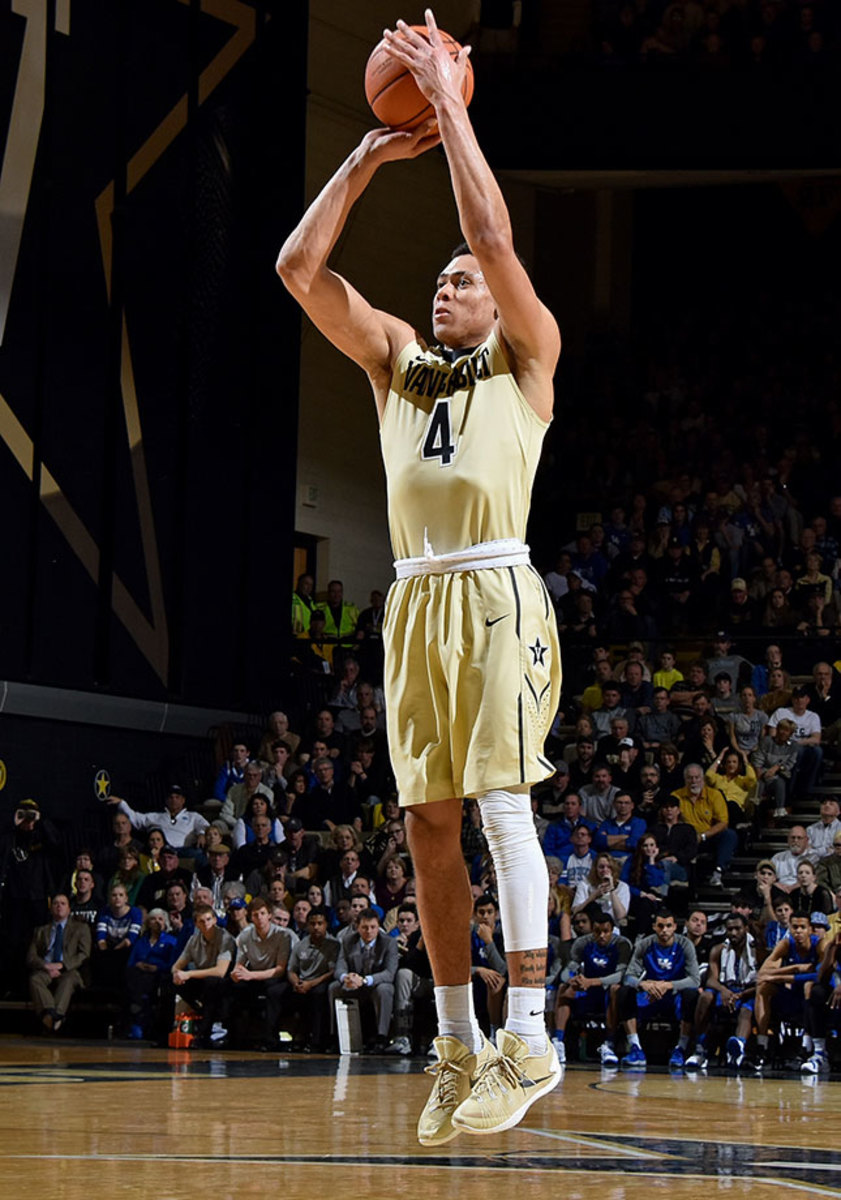
This draft pick doesn't even matter. Bulls fans are all still shell-shocked after the Derrick Rose era suddenly turned into the Jose Calderon and Robin Lopez era, and it's hard to blame them. Having said that, Wade Baldwin's defense and three-point shooting make him a perfect fit for everything the NBA values now. If Jimmy Butler's going to be handling the ball more, it makes sense to add a point guard who can defend and spot up for three while Butler creates.
15. Denver Nuggets: Furkan Korkmaz, G, Turkey (6'5", 175)
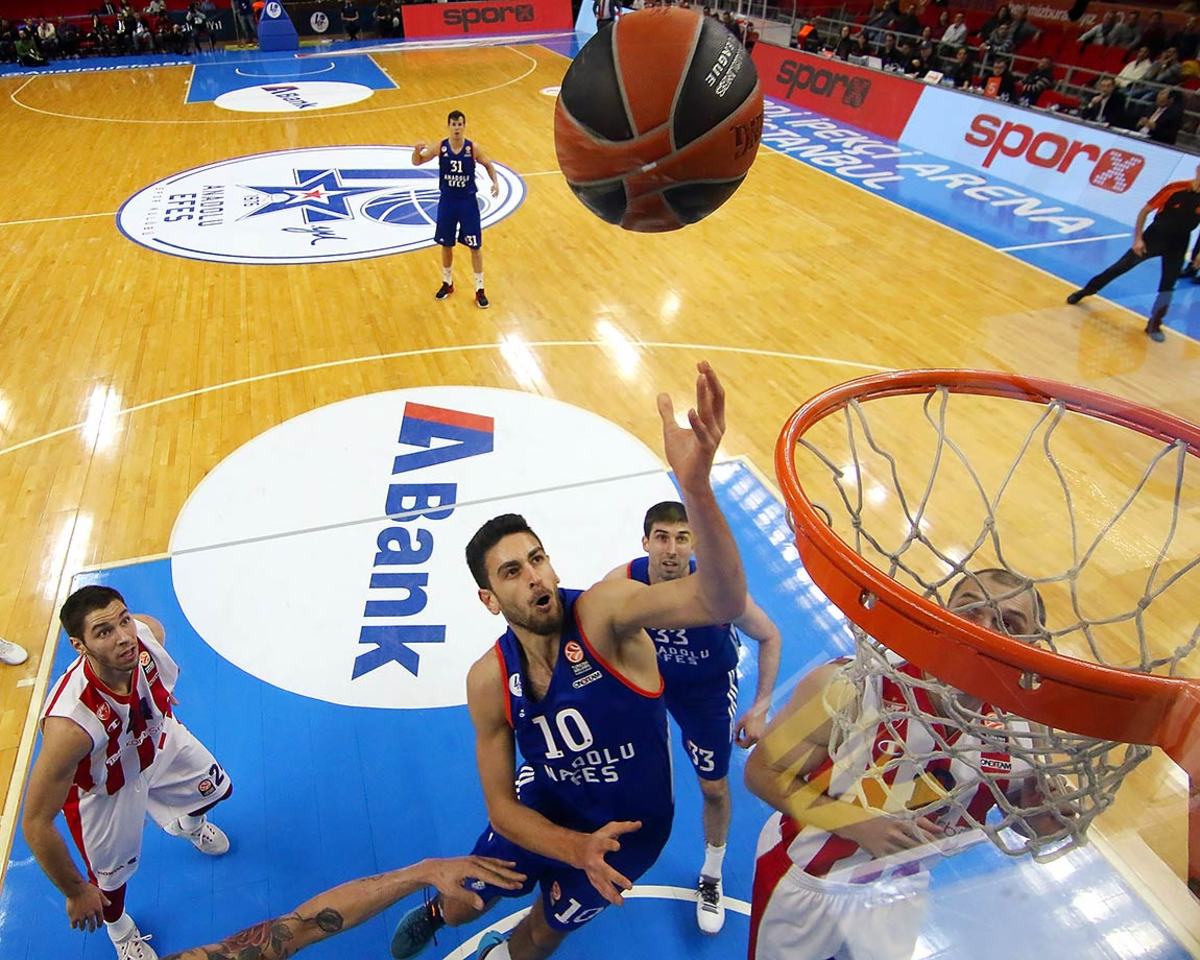
I lied when I said Brandon Ingram was my favorite player in the draft. Furkan Korkmaz is my favorite player in the draft. Wherever he lands tonight, I hope ESPN shows his full, six-minute dunk contest—dunking over that couple's romantic dinner, and then putting on the Darth Vader outfit for the finale—and gives the people what they need. He's also only 18 years old, and probably the best draft-and-stash prospect in this draft. Assuming the Nuggets won't add three rookies this season, Furkan at 15 is a smart play.
16. Boston Celtics: Taurean Prince, F, Baylor (6'7", 220)
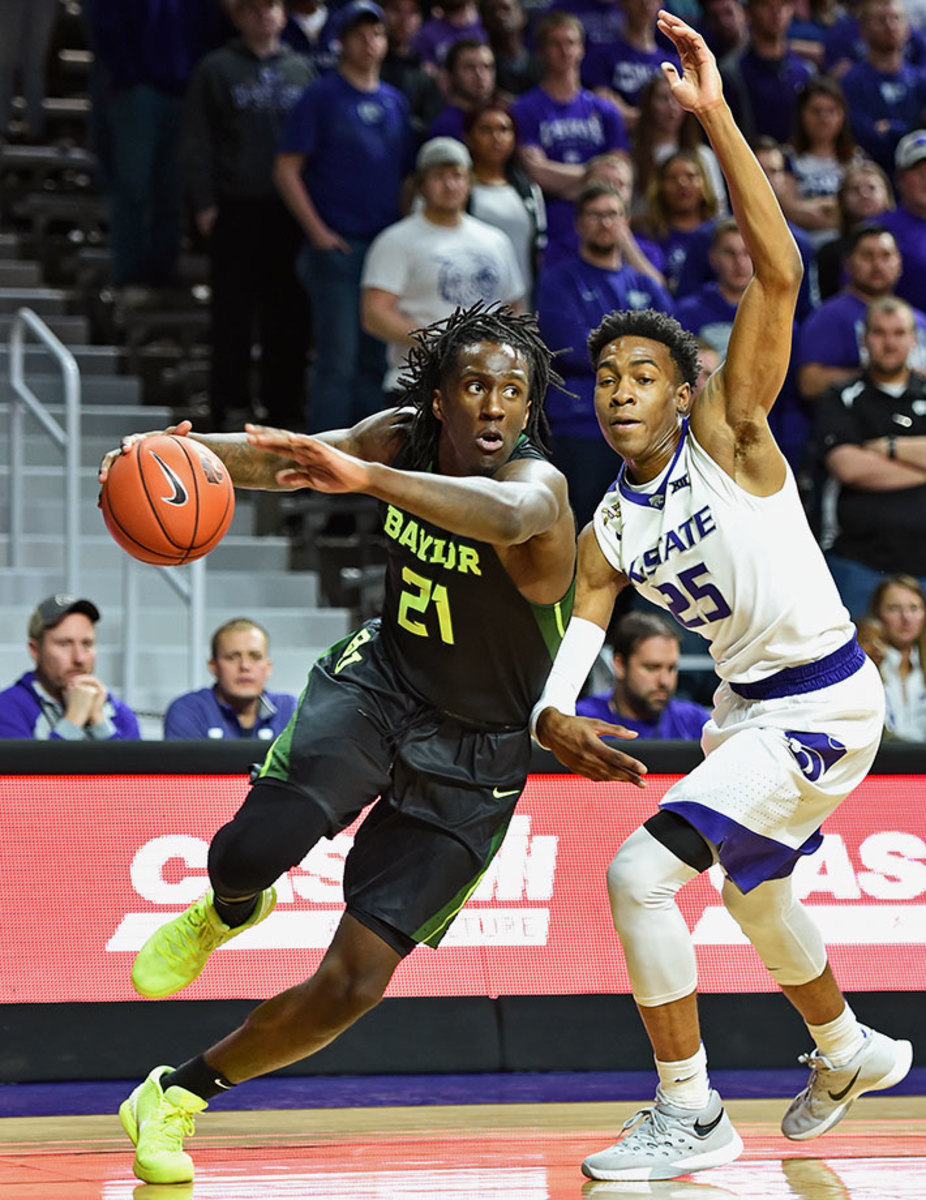
Jae Crowder gets an understudy! Prince can play either forward spot, he's built like a linebacker, he dunks like a linebacker, and his three-point shooting is solid. The Celtics don't have many glaring needs (beyond star power that this draft won't provide), and as a role player who will win over Boston fans within his first month, Prince could be great.
17. Memphis Grizzlies: Malachi Richardson, G, Syracuse (6'6", 195)
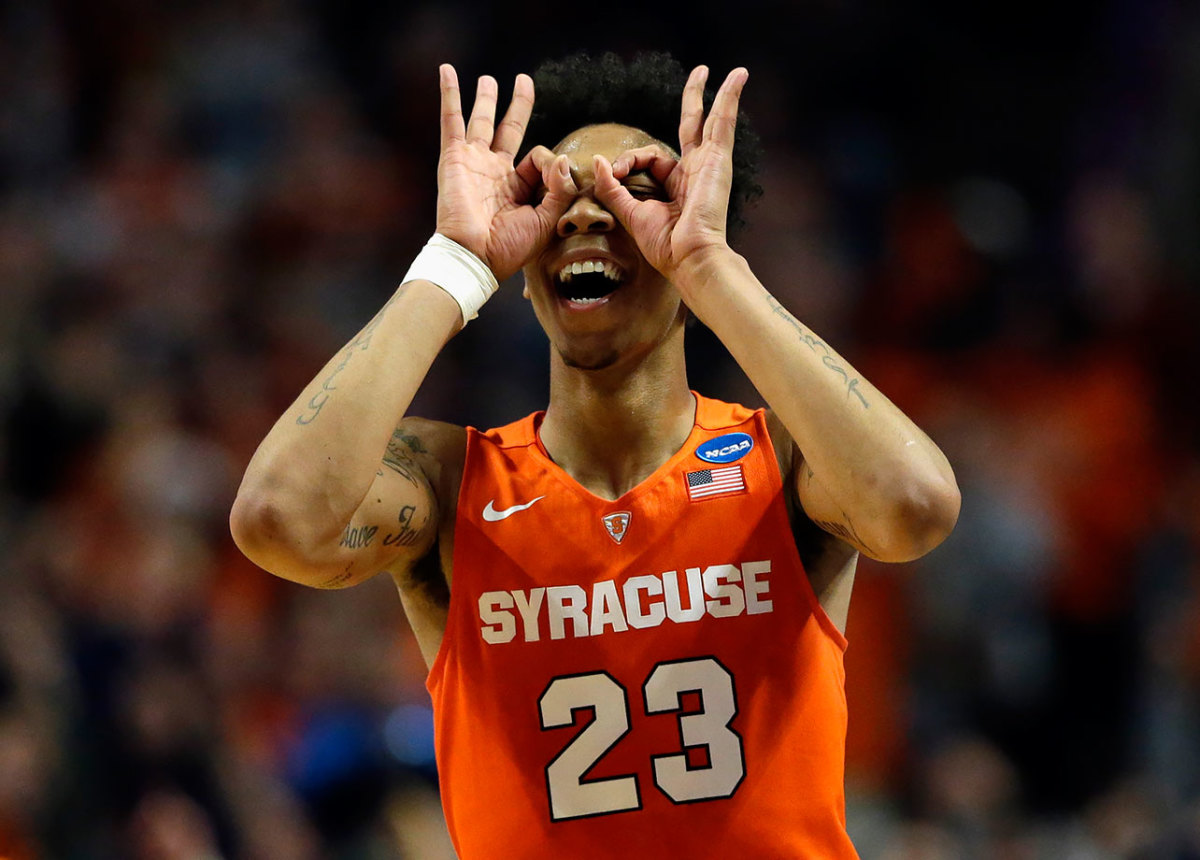
There was talk over the weekend that Memphis encouraged Richardson to shut down his workouts, because if he slides to 17, the Grizzlies plan to take him. That's a little bit puzzling considering some of the struggles he had during the regular season at Syracuse, but he's a good shooter with tools that could turn him into a starter down the road.
18. Detroit Pistons: Henry Ellenson, F/C, Marquette (6'10", 245)
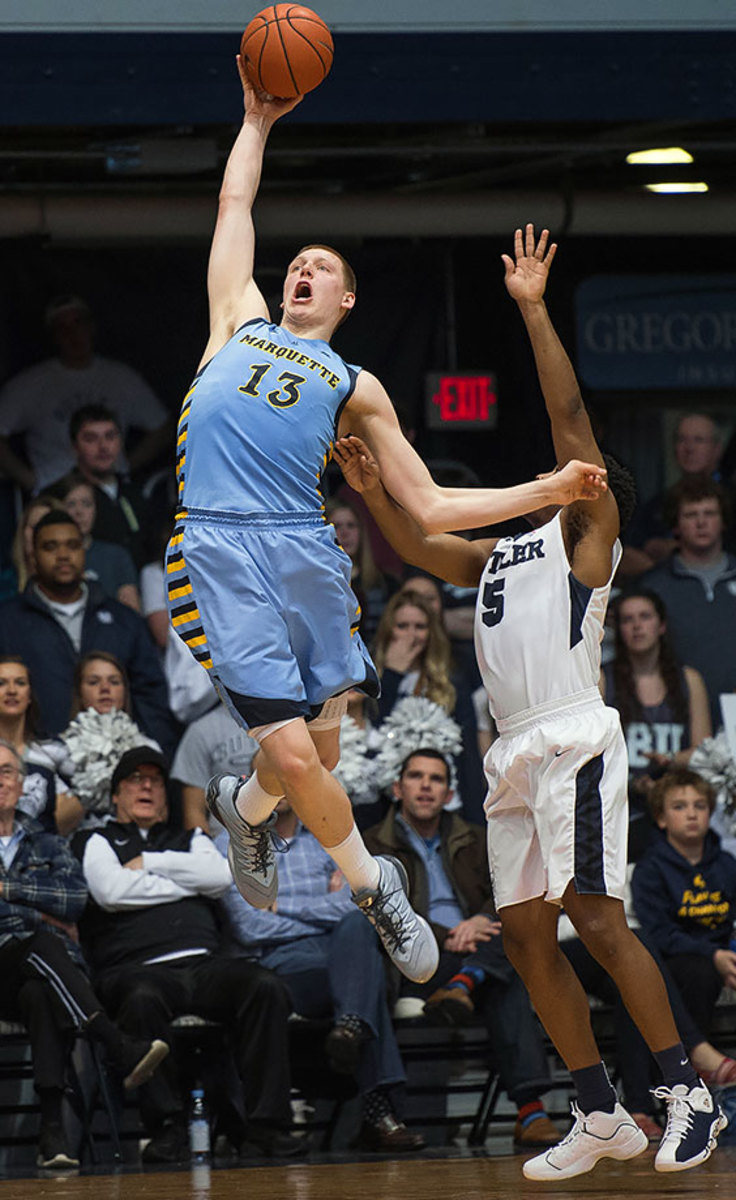
Ellenson may not fall this far on draft night—Toronto, Milwaukee, Denver, and Phoenix will all be tempted—but if he does, it's hard to imagine he slips past Detroit. He's a perfect stretch–four for Stan Van Gundy, with the potential to play next to Andre Drummond or come off the bench as a stretch–five while Drummond sits. His defense will be a work in progress, but this low in the draft, his size and skill would be a steal.
19. Denver Nuggets: Malik Beasley, G, Florida State (6'5", 190)
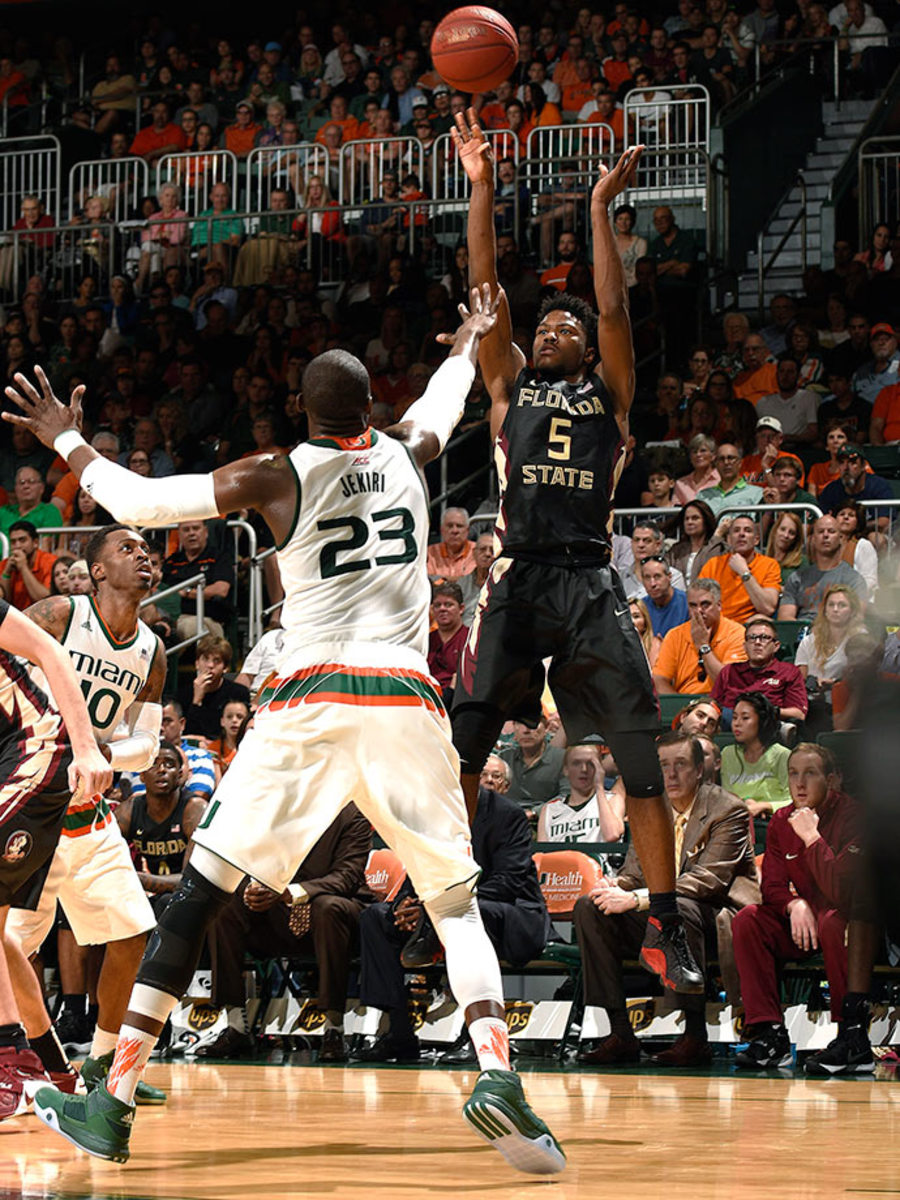
This could be a chance to steal a long-term sidekick for Emannuel Mudiay. Beasley's a little bit like Marquese Chriss. He wasn't on anyone's draft radar coming out of high school, and even now, he's something of a mystery. He can shoot, he's explosive, and while a little undersized, he's got all the tools to grow into a solid defender. Most importantly, my favorite fact of the draft is that both his parents are actors, and his dad is currently working on Bloodline, trying to get paid by Kevin, unaware that Kevin did a bad thing—I'm so in on Malik Beasley.
20. Indiana Pacers: Denzel Valentine, G/F, Michigan State (6'6", 220)
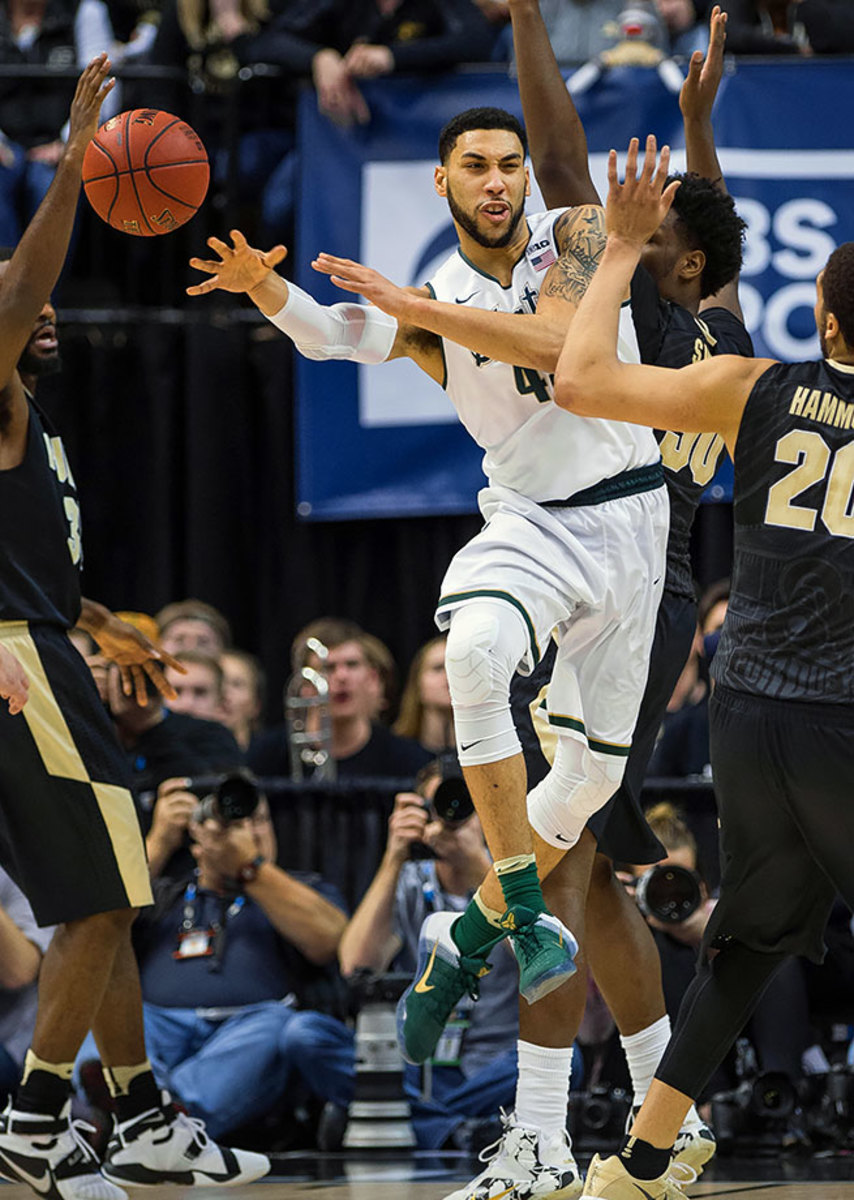
Valentine would probably be closer to a lottery pick if teams weren't scared off by injury concerns over a possibly degenerative knee. Still, his shooting and skill on offense can help anyone, he's one of the smartest players in the draft, and as a four-year senior, he'll be ready to help right away. All of it sounds like a player Larry Bird would fall in love with. Plus, the Pacers bet on Myles Turner's health last year and that worked out pretty well.
21. Atlanta Hawks: Dejounte Murray, G, Washington (6'5", 170)
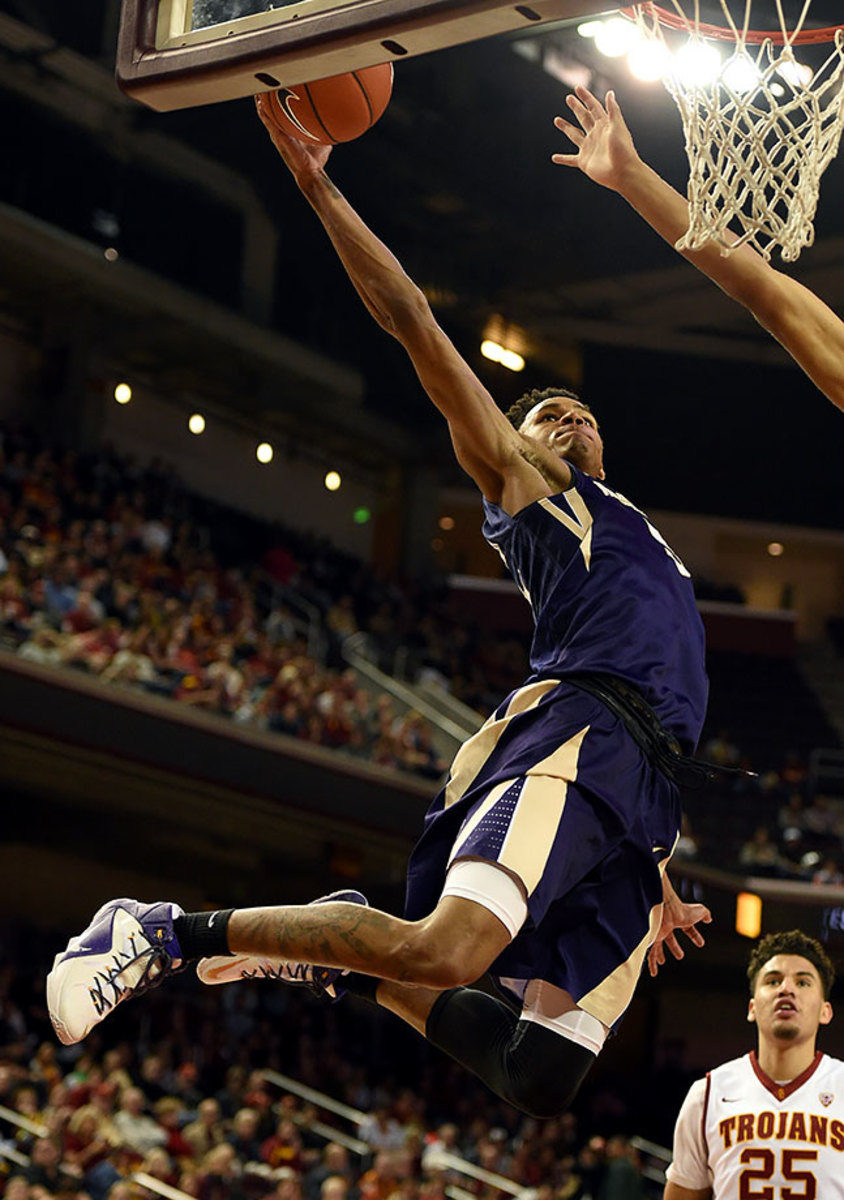
Now that Schroeder is the new Teague, maybe Atlanta needs a new Schroeder? Murray is giving off strong Tony Wroten vibes—great physical tools, can get to the rim at will, can't shoot, probably should've stayed in school—and maybe that scares some teams. It should scare some teams. But the Hawks' staff has been consistently excellent at developing young players, and Murray has more to work with than almost anyone.
22. Charlotte Hornets: Juan Hernangomez, F, Spain (6'9", 225)
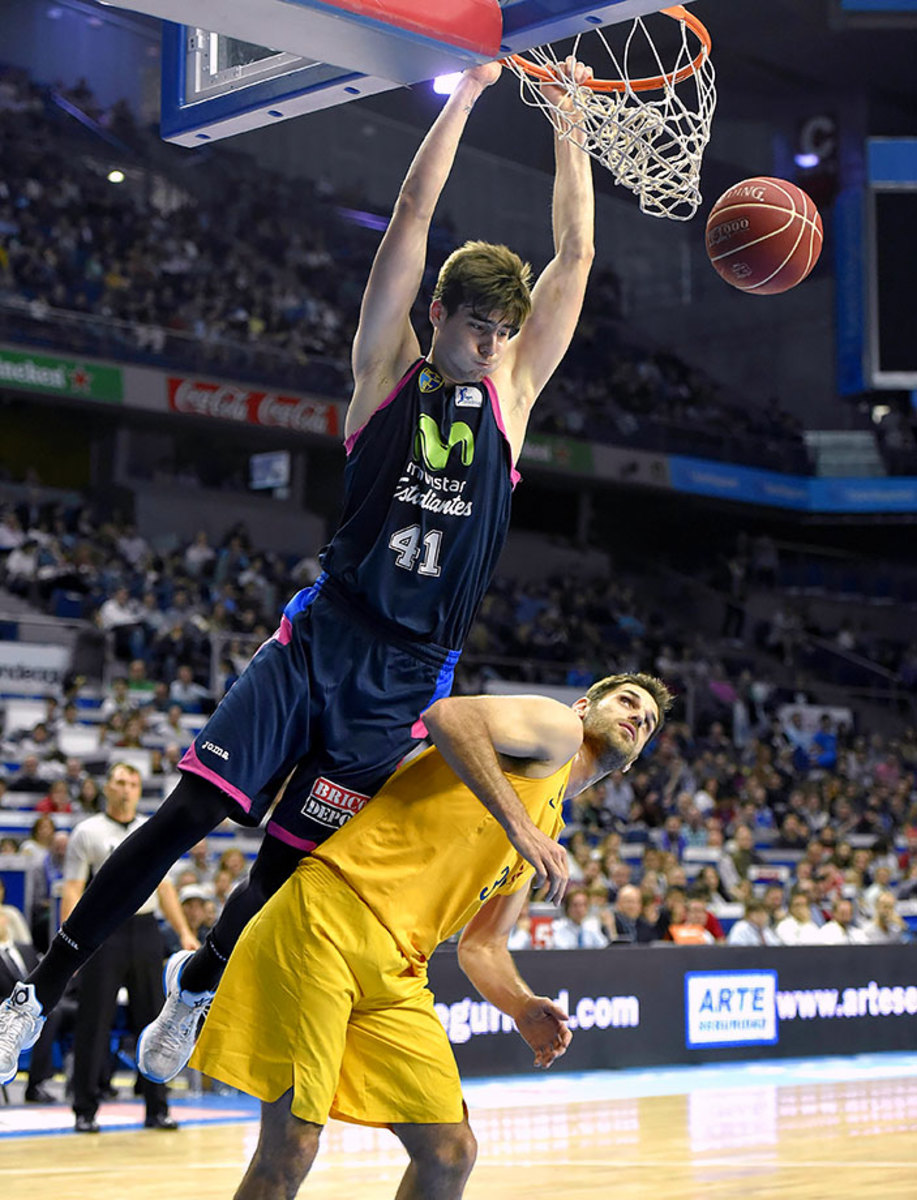
Juan "Juancho" Hernangomez is skilled and he could see time at either forward position in the NBA. His athleticism will be a question mark, but he plays incredibly hard to help compensate. Meanwhile, the Hornets may lose one or both of Nic Batum or Marvin Williams this summer. Grabbing Hernangomez could be a good insurance policy for the future.
23. Boston Celtics: Ante Zizic, C, Croatia (6'11", 240)
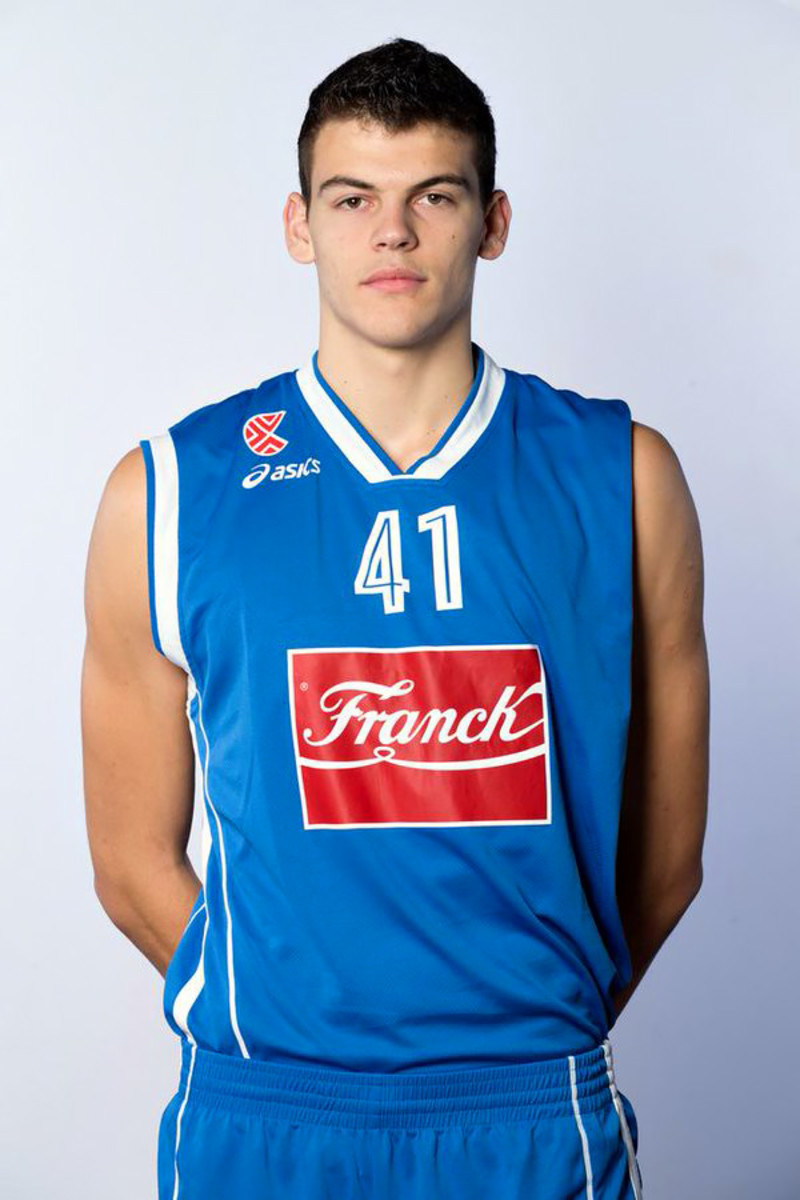
If the Celtics can't swing a trade, they'll likely look to draft–and–stash at least one of these picks. They could go with Zizic here, or Ivica Zubac, another 7–footer from the Adriatic League. Zizic is the more active and athletic of the two and figures to fit better with the direction of the league, but the Zizic-Zubac debate will (hopefully?) come down to the wire.
24. Philadelphia 76ers: Demetrius Jackson, G, Notre Dame (6'1", 220)
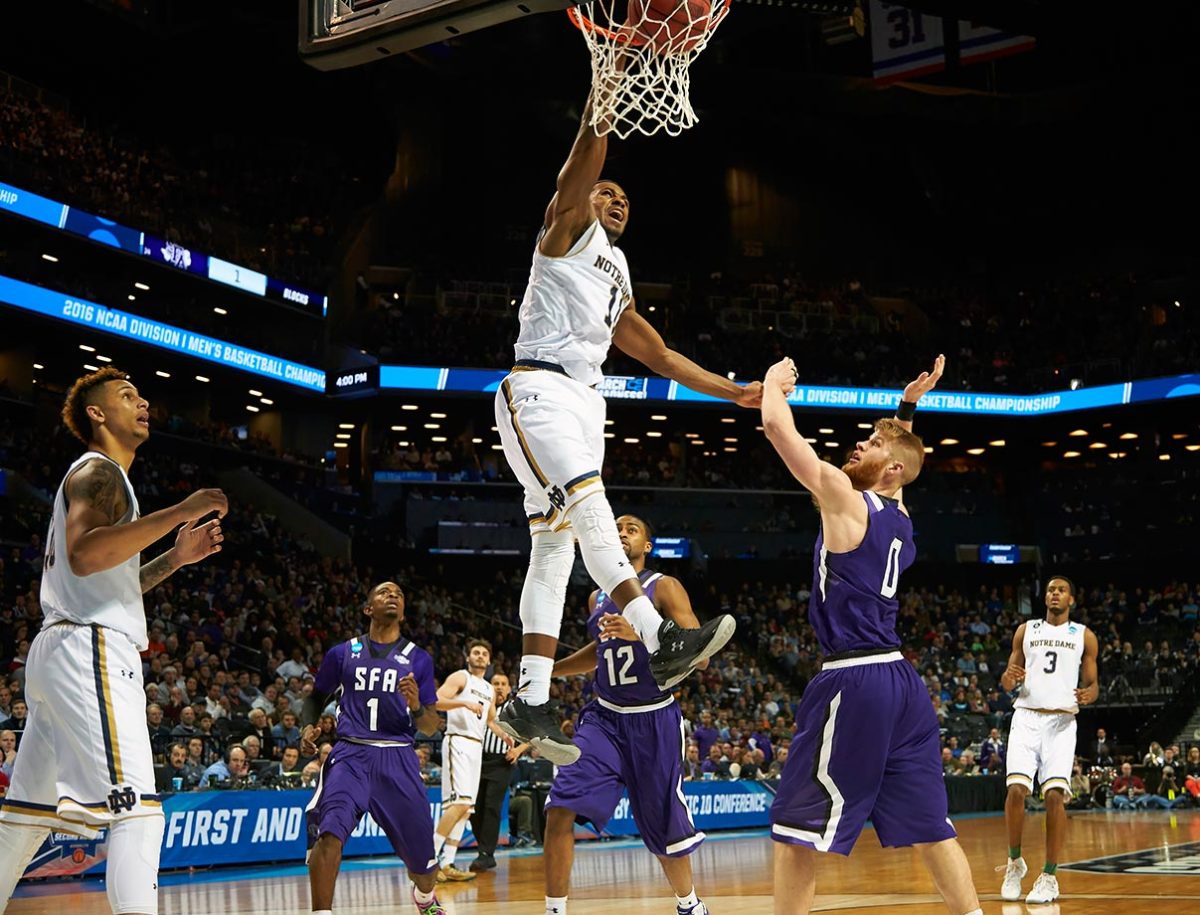
Jackson's long-term future probably makes the most sense as a high–energy third guard, but given how barren the backcourt in Philadelphia has been, he could make sense as a starter in the immediate future. Most importantly, he's got good length (6'5 wingspan) to help himself defensively, and he can hit spot-up jumpers, a prerequisite for any guard playing next to Ben Simmons.
25. Los Angeles Clippers: Cheick Diallo, F, Kansas (6'9", 218)
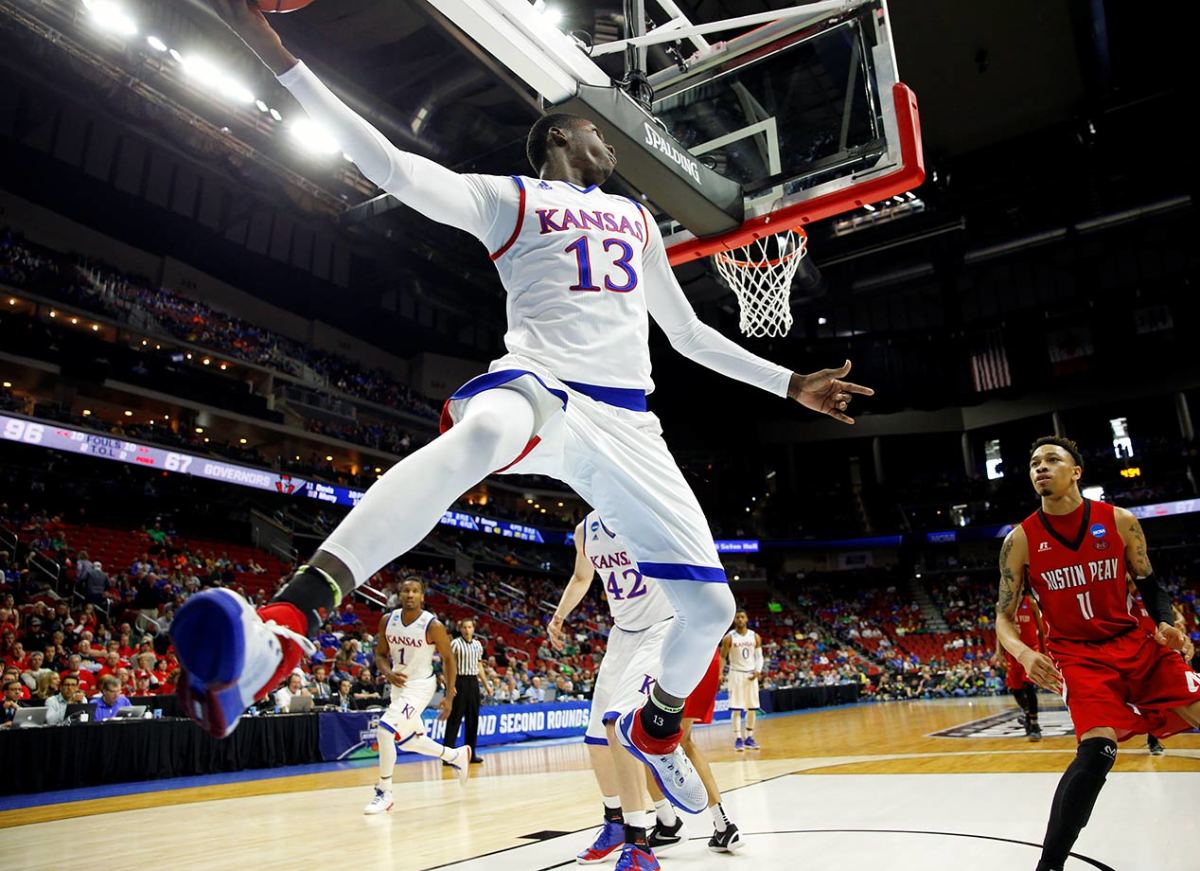
Diallo was basically invisible at Kansas this past season—3.0 ppg, 7.5 mpg—but a great combine and crazy physical tools—7'4.5" wingspan—has helped boost his stock into the first round. He has Biyombo potential off the bench, and the Clippers could draft him here and pay him roughly $70 million less over the next few years. Not a bad deal.
26. Philadelphia 76ers: Patrick McCaw, G, UNLV (6'7", 181)
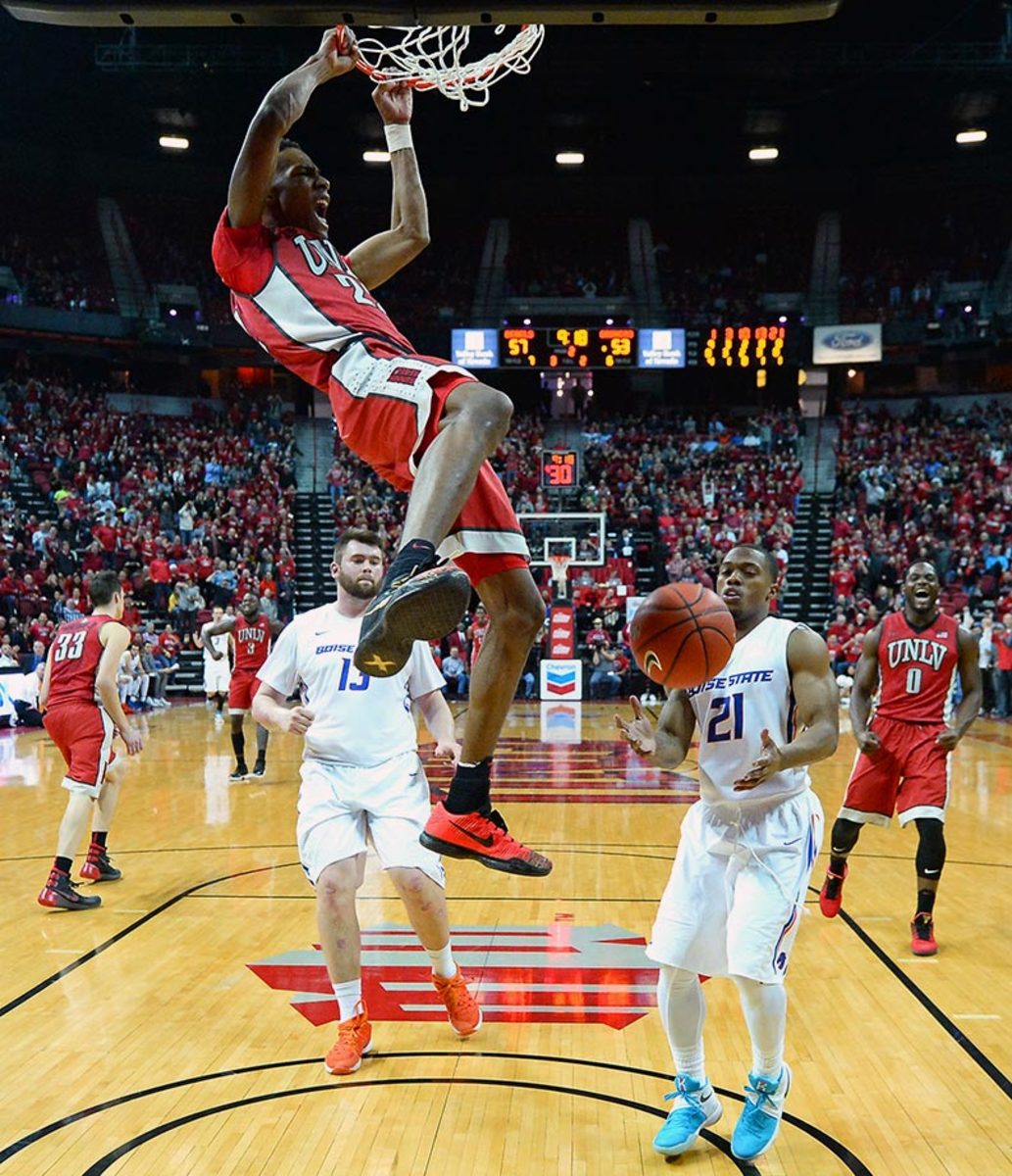
Patrick McCaw has all the tools to become an awesome two-way wing in a few years. He's long, he's big, and he shot 36% from three last year. He got lost on a crappy UNLV team that fired its coach, but if his shooting improves, and he could turn into a real steal this low in the draft. Either way, he'd be a much better project than most of the wings the Sixers have had the past few years.
27. Toronto Raptors: DeAndre Bembry, G, St. Joseph's (6'6", 220)
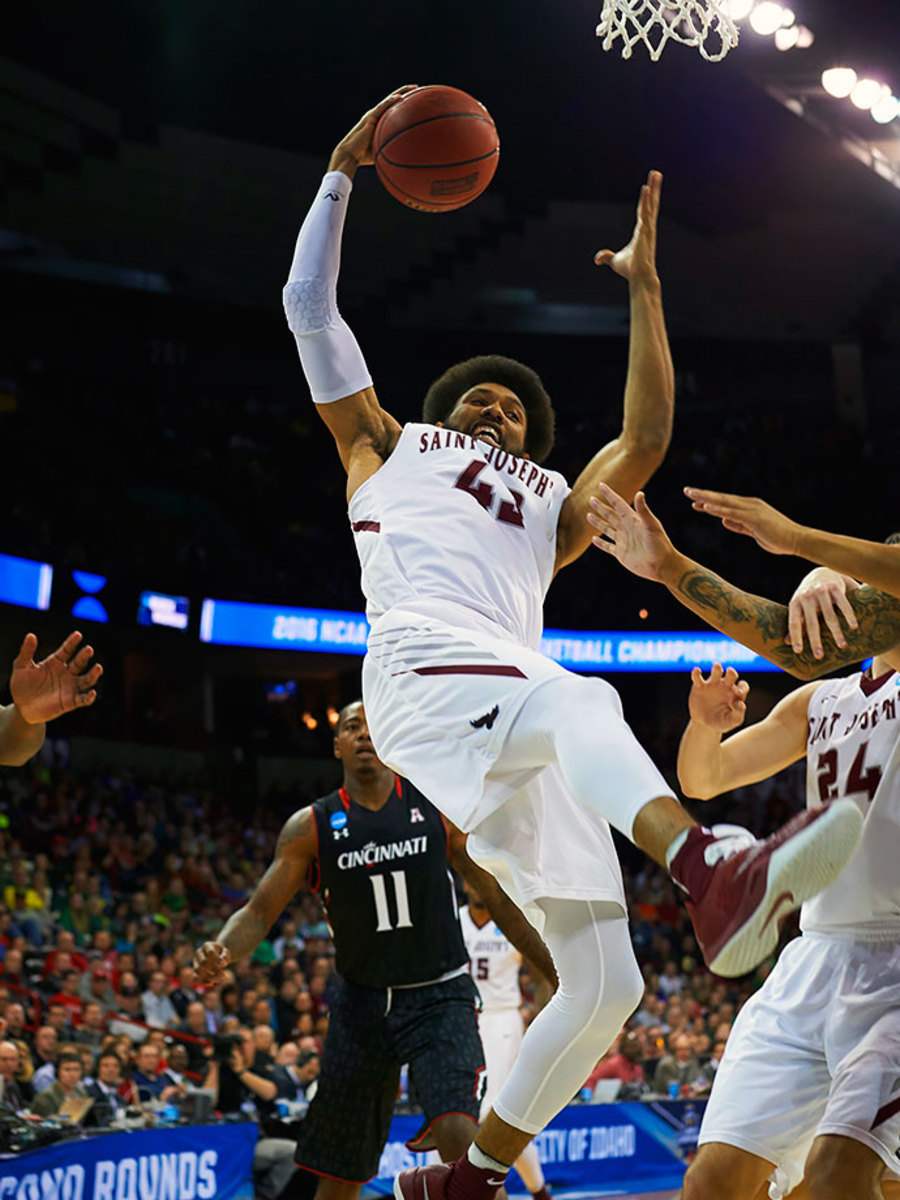
Bembry's three-point shooting is a question mark—31% for his career, 26% last season—and that's probably what will scare off Philly. But that might be the only major weakness. He's long and athletic and should be a great defender. He's got a high IQ, and had one of the most well-rounded games in college basketball (17.5 ppg, 7.8 rpg, 4.5 apg). He's the type of player who should be twice as valuable on a good team like the Raptors. Think Shaun Livingston on the wing, and not just because of the afro.
28. Phoenix Suns: Ivica Zubac, C, Croatia (7'1", 265)
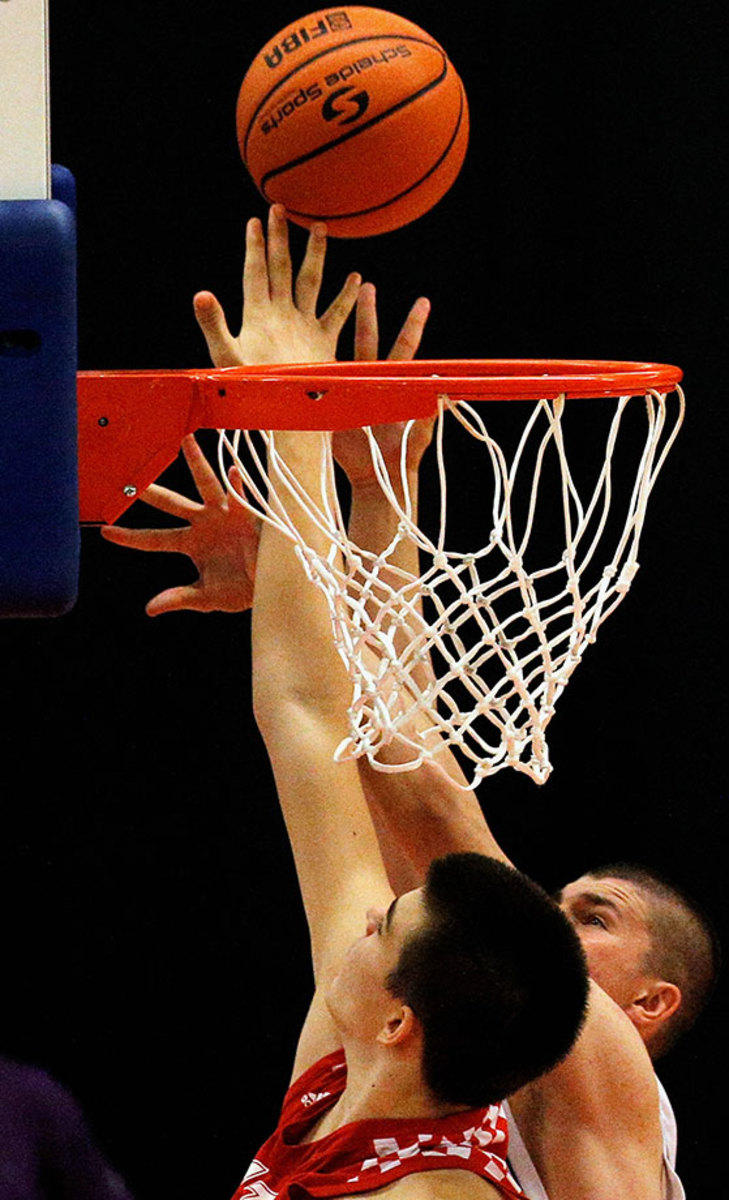
Zubac could go much higher, and at 19 years old, there's plenty of room to grow after another year or two overseas. The recent track record of the Adriatic League big men (Nikola Jokic, Jusuf Nurkic) is certainly encouraging. In any case, the Suns are unlikely to bring all three picks to the NBA next, so this would be a nice longterm investment if he's available.
29. San Antonio Spurs: Tyler Ulis, G, Kentucky (5'9", 149)
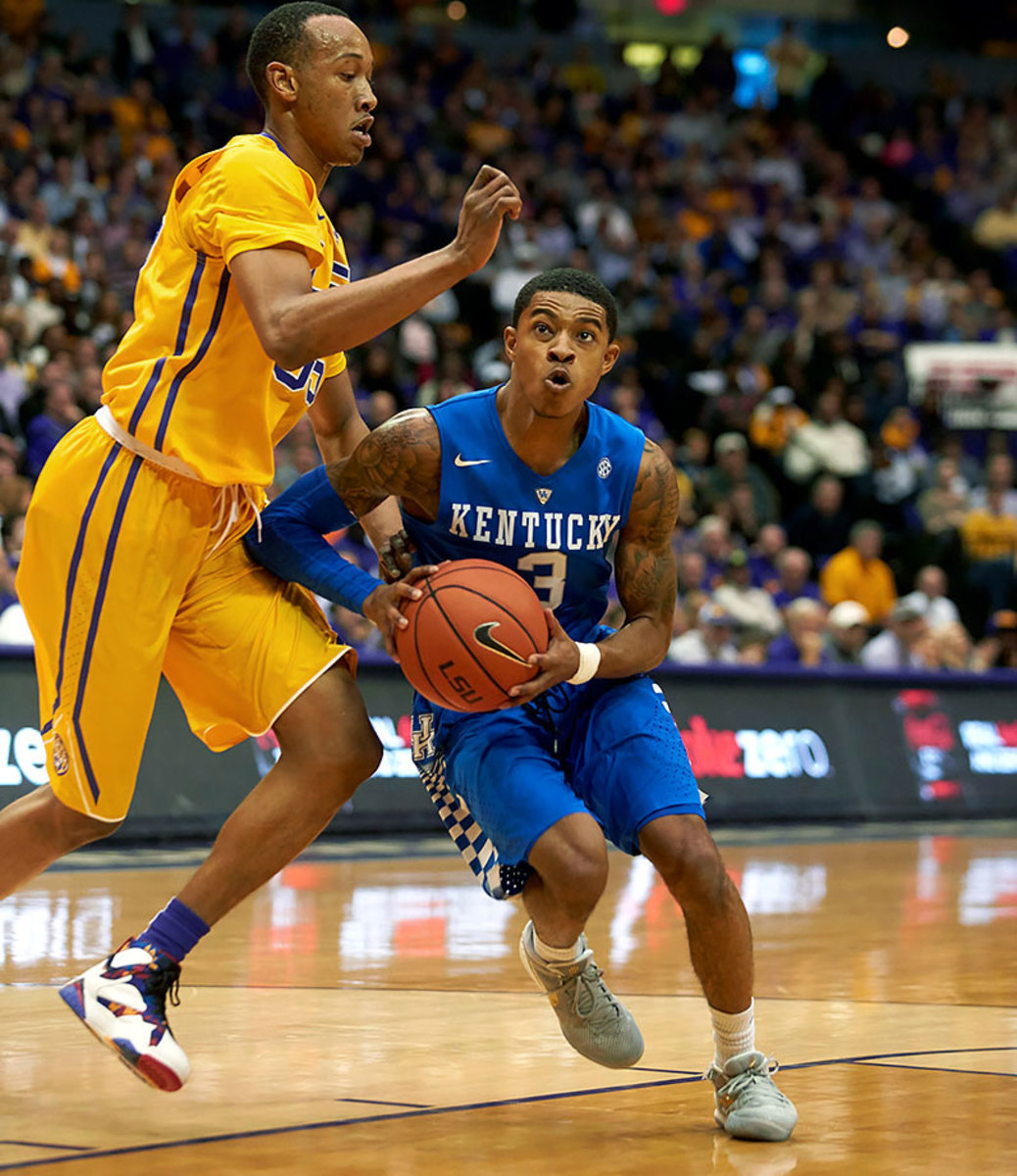
Ulis is dealing with some of the same injury concerns facing Denzel Valentine, and for a point guard who's already 150 pounds and 5'9", giving teams more room for skepticism is not ideal. But look: People around Kentucky basketball have been effusive in their Tyler Ulis praise for two years, and I will bet anything he'll be productive wherever he goes. If injury questions lead him to San Antonio and a bench mob with Kyle Anderson and Boban, this slide will be 100% worth it.
30. Golden State Warriors: Caris LeVert, G, Michigan (6'7", 205)
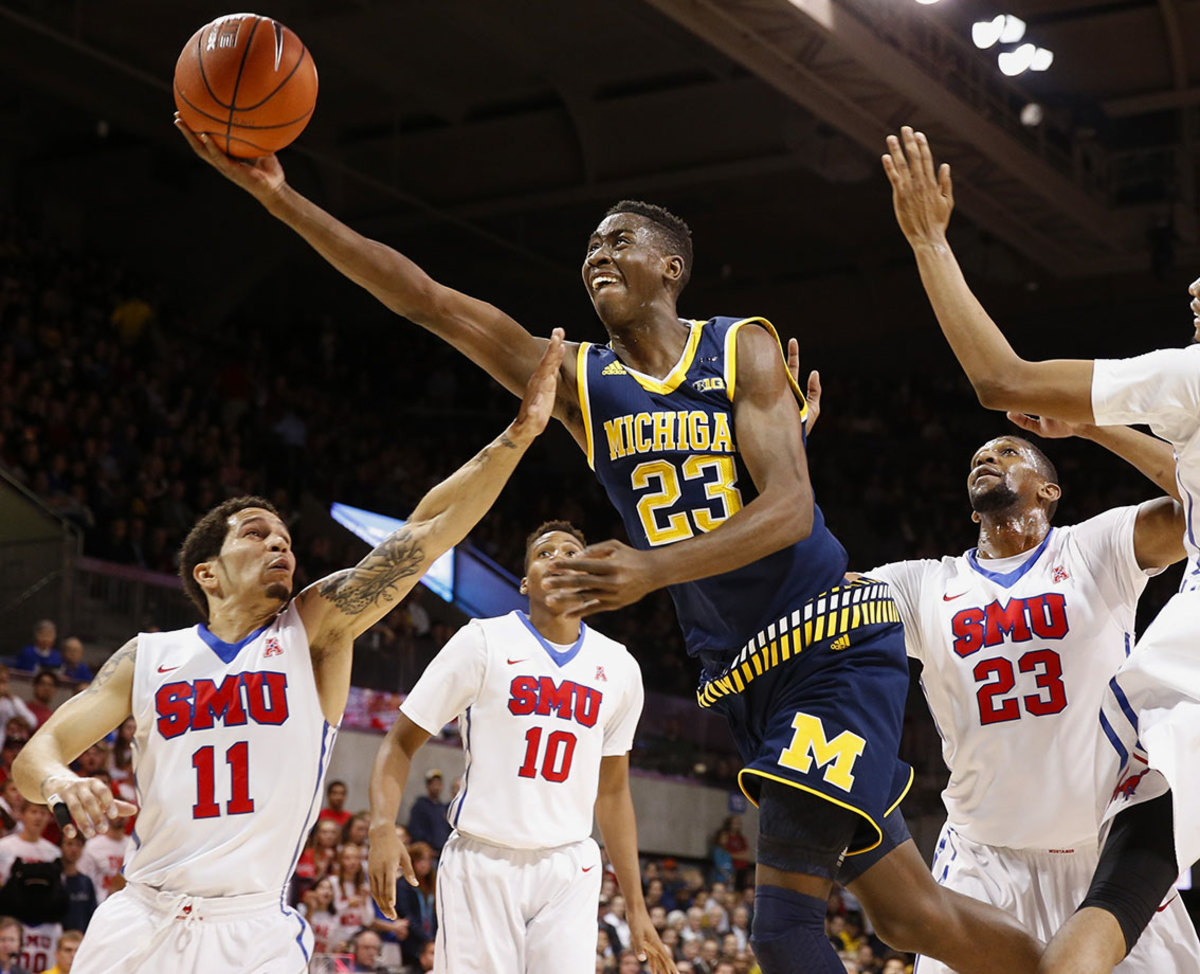
In real life, given the uncertainty surrounding both Andrew Bogut and Festus Ezeli, Damian Jones or A.J. Hammons make more sense for the Warriors. In this mock reality, all that has ever mattered—in March, April, May, and June—is setting Caris Levert free in Golden State. Don't talk to me about a Jones fracture. We're here now. The draft is in 12 hours. Can't quit before the miracle happens.
45. Pascal Siakam | New Mexico State | PF | 6’10”, 227 | So.
Siakam’s already 22, but his size, ability to get up and down the floor and competitive spirit helped him stand out at the combine. The native of Cameroon averaged 20 points, nearly 12 rebounds and two blocks last season, and that production combined with his tools make him an intriguing sleeper.
46. Isaiah Whitehead | Seton Hall | G | 6’5”, 210 | So.
Though Whitehead is a talented scorer and competitor, you still wonder whether he can handle lead-guard responsibilities in the NBA. There’s been talk of him sneaking into the first round, but there are certainly safer bets.
47. Robert Carter Jr. | Maryland | F/C | 6’9”, 251 | Jr.
Another combine standout, Carter has slimmed down from his days at Georgia Tech and presents a wide bag of tricks on offense, both facing up and with his back to the basket. His defense is a different story.
48. Dorian Finney-Smith | Florida | SF | 6’8”, 215 | Sr.
Finney-Smith has fared well throughout the pre-draft process, and his athleticism, toughness and shooting ability make him a viable role player on the wing. Guys in his mold have certainly succeeded in the past.
49. Cat Barber | NC State | PG | 6’3”, 173 | Jr.
Dangerous off the dribble with elite speed and quickness, it’s easy to see Barber as a bench scorer and shot creator. That said, he’ll have to prove he can blend into a team concept and distribute better in order to stick.
50. Prince Ibeh | Texas | C | 6’11”, 261 | Sr.
Ibeh‘s not a scorer at all (4.1 PPG in 18 minutes as a senior), but outstanding measurables including a nearly 7’6” wingspan and 9’4.5” standing reach make him extremely draftable. All he has to do is pick up the right concepts on the defensive end, and he should provide some value.
51. Isaia Cordinier | Denain (France) | SG | 6’5”, 177 | 19
Very good athlete with strong intangibles, but has a long way to go from the French second division to make an impact. If he’s stashable, either overseas or in the D-League, it certainly helps his appeal.
52. Jake Layman | Maryland | SF | 6’9”, 209 | Sr.
A capable shooter and underrated athlete, Layman floated at times in college but played a role for a loaded Maryland team similar to what the pros will ask of him. If he can cut it defensively and knock down a shot, he can fill out a rotation.
53. Wayne Selden | Kansas | SG | 6’6”, 232 | Jr.
After three years at Kansas, Selden’s still more athlete than player. He’s on the fringe, and also coming off meniscus surgery.
54. Kay Felder | Oakland | PG | 5’10”, 177 | Jr.
Felder popped athletically at the combine, and following a highly-productive college season has a good case in the second round. As little guys go, he’s not Tyler Ulis as a playmaker, but he might be the better scorer.
55. AJ English | Iona | G | 6’4”, 190 | Sr.
English is one of the oldest guys in the draft but he’s impressed in the run-up, winning Portsmouth MVP and competing well at the combine. He was prolific at Iona and could conceivably give you something late.
56. Jarrod Uthoff | Iowa | F | 6’10”, 214 | Sr.
Oversized shooters always earn themselves looks, and here’s Uthoff, who’s skilled with sneaky athleticism, but not exceptionally strong and without a definite position on the defensive side of the ball.
57. Guerschon Yabusele | Rouen (France) | PF | 6’8”, 240 | 20
Kind of an obscure player with an awesome name, Yabusele brings a strong frame, good hands and touch at the basket. Can also face up and hit a jump shot. Someone to keep overseas and monitor.
58. Sheldon McClellan | Miami | SG | 6’6”, 198 | Sr.
McClellan scored the final invite to the draft combine, and can shoot it, put it on the deck and get to the basket. He played both on and off the ball in college, which bodes well for a pro transition. If he can cut it enough defensively, he’s an interesting late play.
59. Damion Lee | Louisville | G/F | 6’6”, 210 | Sr.
Lee can really shoot, and put together a pretty good lone season at Louisville. If he continues to hit the deep ball and develops as an all-around scorer, he might be a low-cost piece for someone on the wing.
60. Yogi Ferrell | Indiana | PG | 6’0”, 178 | Sr.
With all said and done, Ferrell, a former McDonald’s All-American, put together a very solid career at Indiana. He markedly improved as an upperclassman and can make plays for others, though his size makes it difficult to assign incredible upside. His quickness should help, and the maturity of his game makes him worth consideration for a late dart throw.
